My father, Leo Dodd, was a history buff as well as an artist and engineer. He left behind a notebook full of research into his father-in-laws’ stores, the Tierney Markets. The first picture (below), from 1906, shows Raymond Tierney, my grandfather, in front of the meat market he bought on North Street when he was 20 years old. The building, which was torn down in the 1990s, was located where Hudson Avenue splits off. “The first blazer from Main Street corner,” as my grandfather describes it in his memoir (included further down on this page).

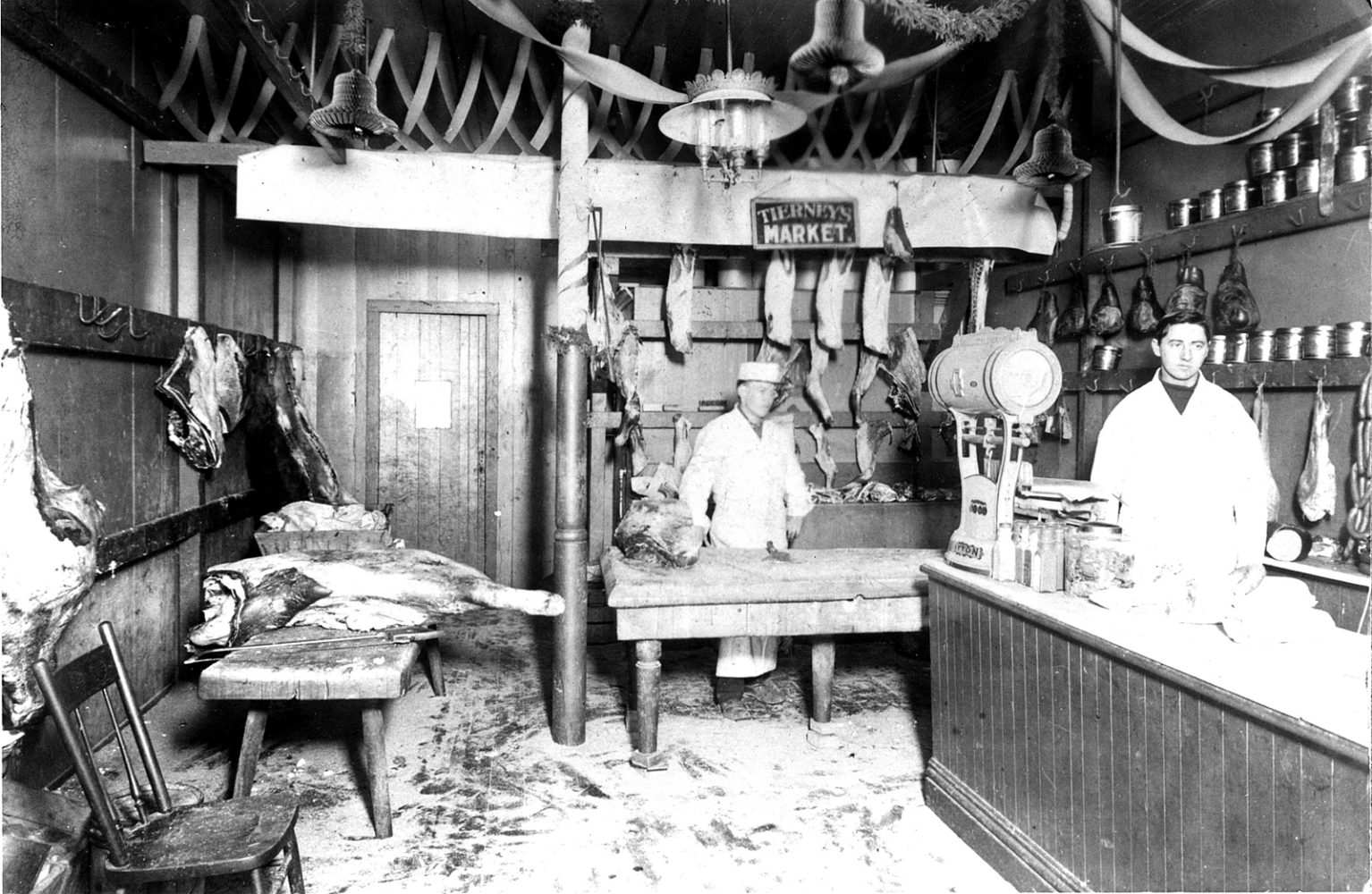
By 1912 he had made enough money to buy the building which included eight apartments upstairs. He rented space to the drug store next door and he converted the livery way, shown to the right, into space for a restaurant tenet, “The Northway Texas Lunch.” Ray, the eighth child of eleven, was a real entrepreneur and was able to buy his parents, William T. Tierney and Winifred Maloney, their first home. Ray’s siblings, James, Joseph, Walter, Art and Betsy all worked there at various times. He opened a much larger store, the Mammoth Market, in 1935 at 634 South Avenue. Mammoth Market burned to the ground in 1939 and Ray Tierney finished his long working career at a third store, Tierney Market, 999 Clinton Avenue South on the corner of Caroline.
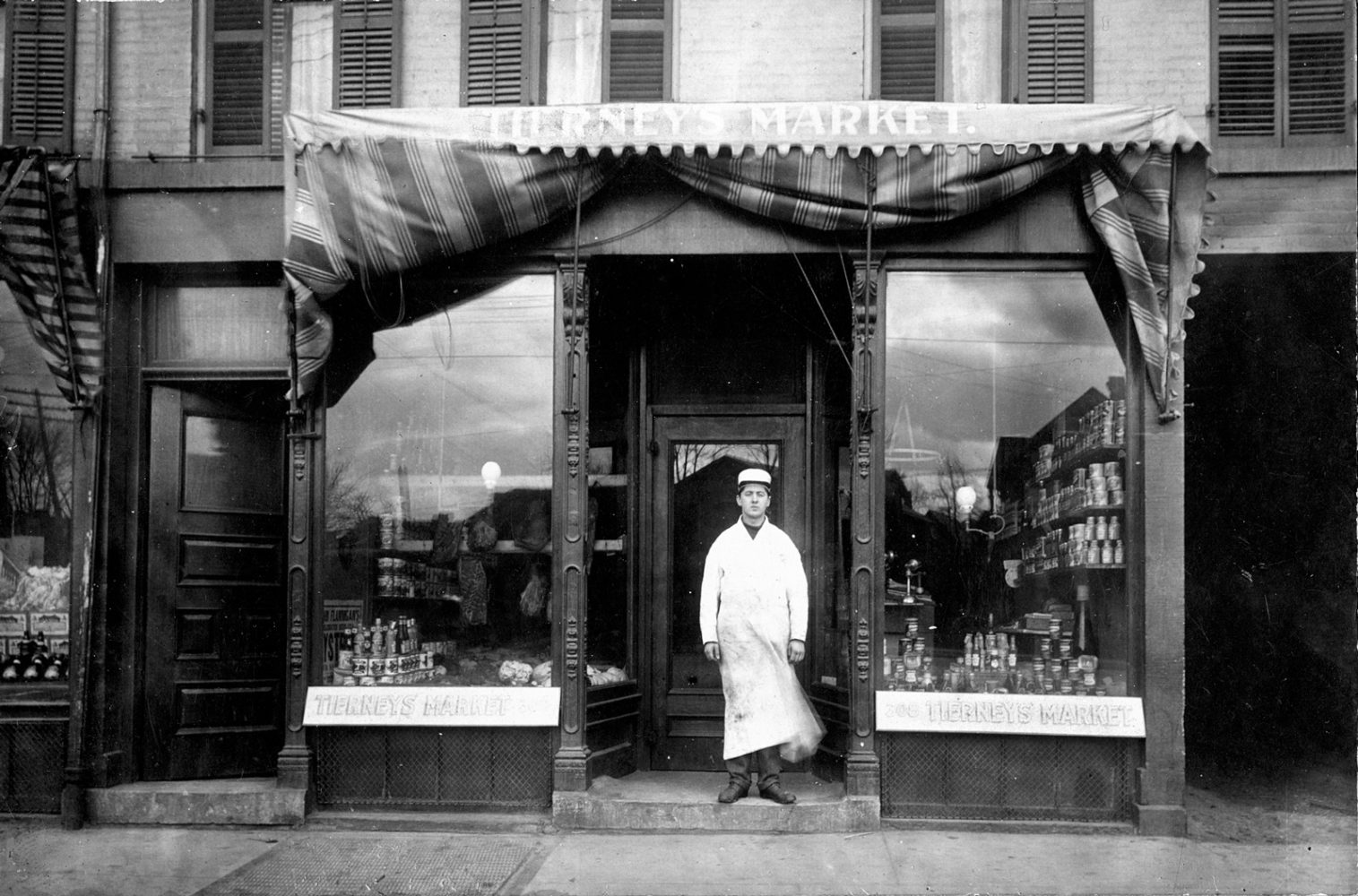
Ray married Dorothy M. “Laura” Biel of 10 Cayuga Street at nearby St. Boniface Church in 1912. Laura worked as a stenographer/secretary at Upton Cold Storage. They had a stillborn daughter and then a daughter, Rita, in 1915. Laura died from childbirth complications thirteen days later.
Ray married Mary M. “Maime” Walsh, a waitress at the Sibley Tea Room. Maime grew up on Stone Street in downtown Rochester and went to school at nearby St. Mary’s. Maime’s mother was a widow of two years, living with William and Flossie O’Keefe and going to Corpus Christi Church with her daughter. Ray and Maime were married at Corpus Christi in 1916. They had five more children. I am one of their thirty one grandchildren.
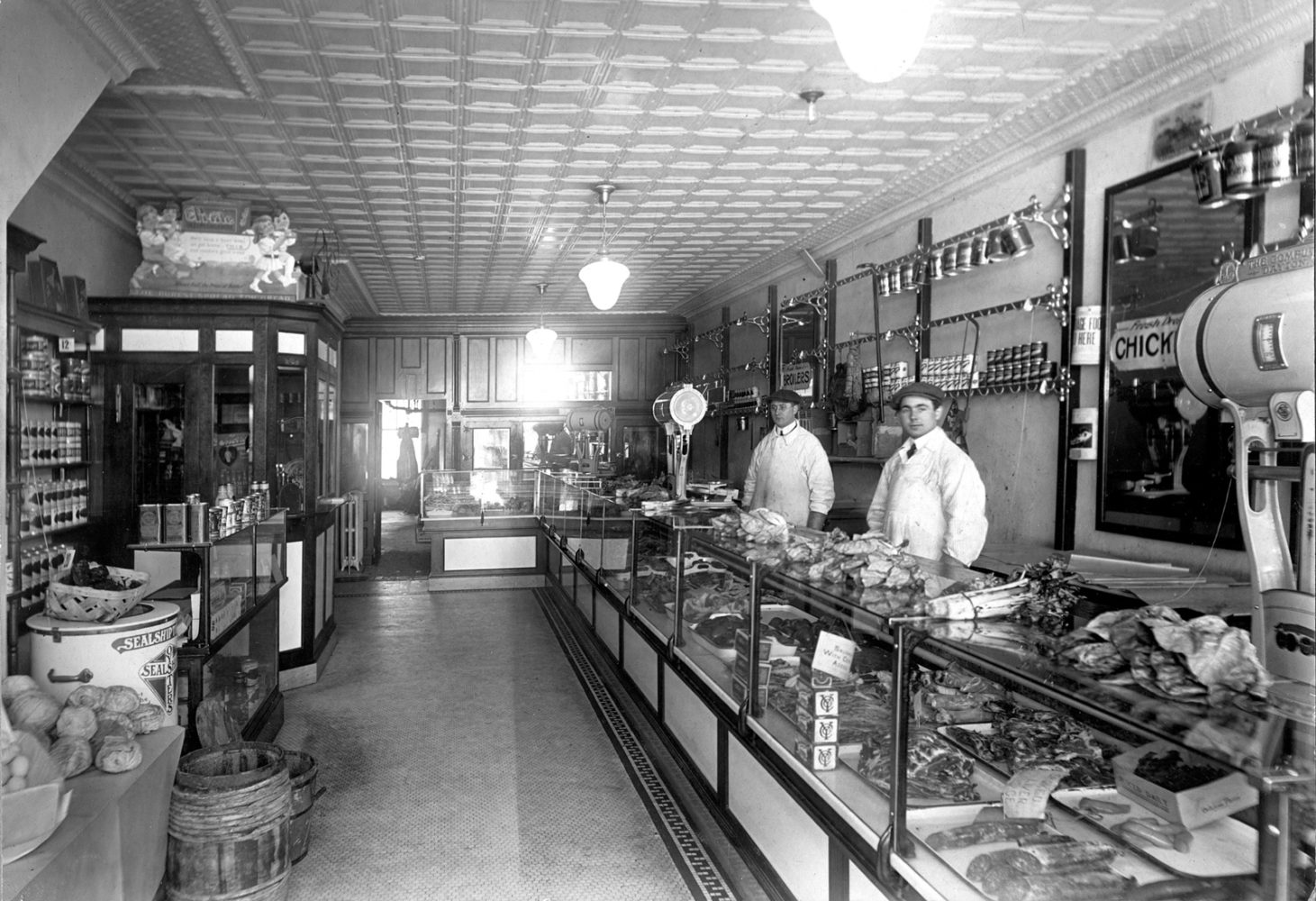
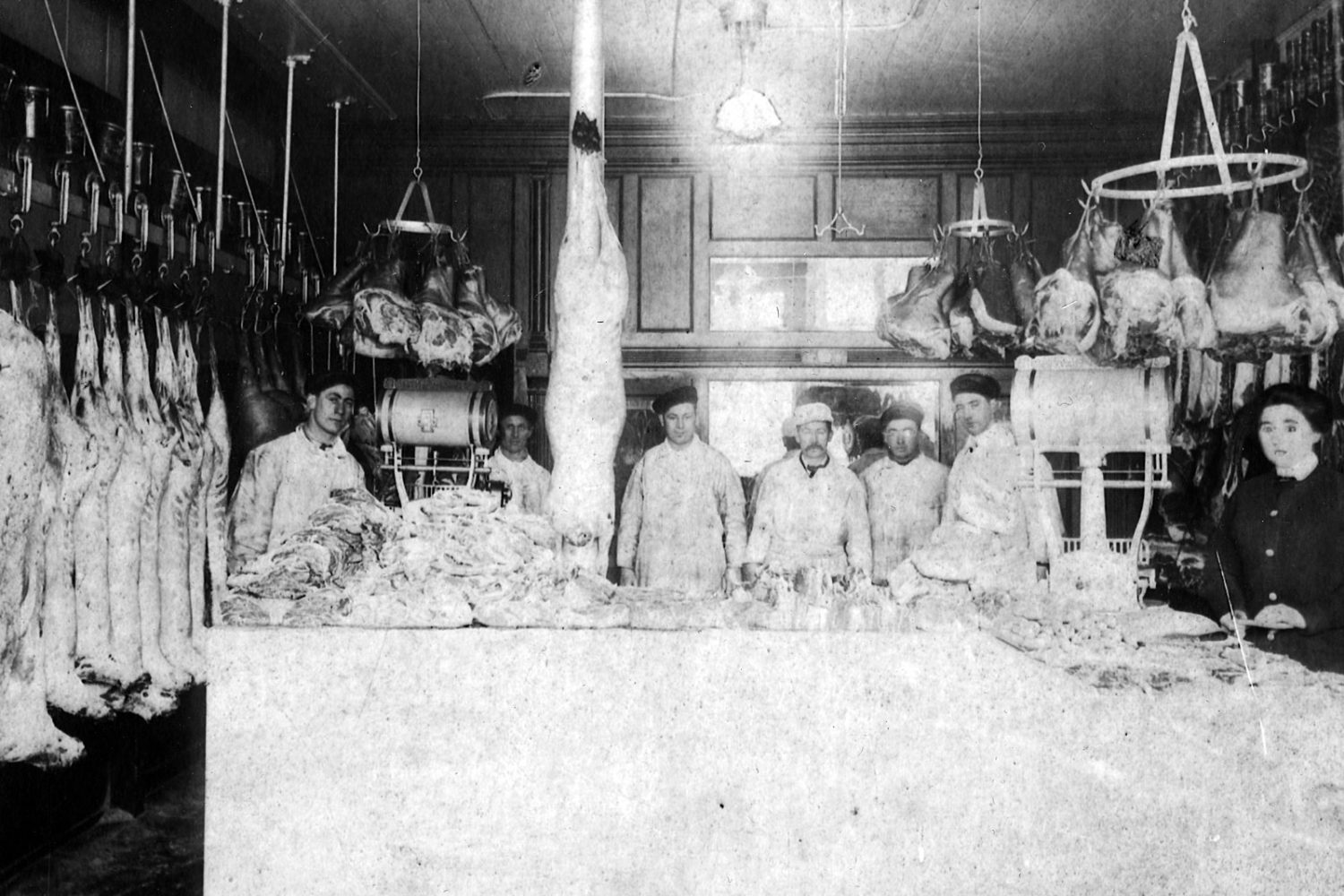
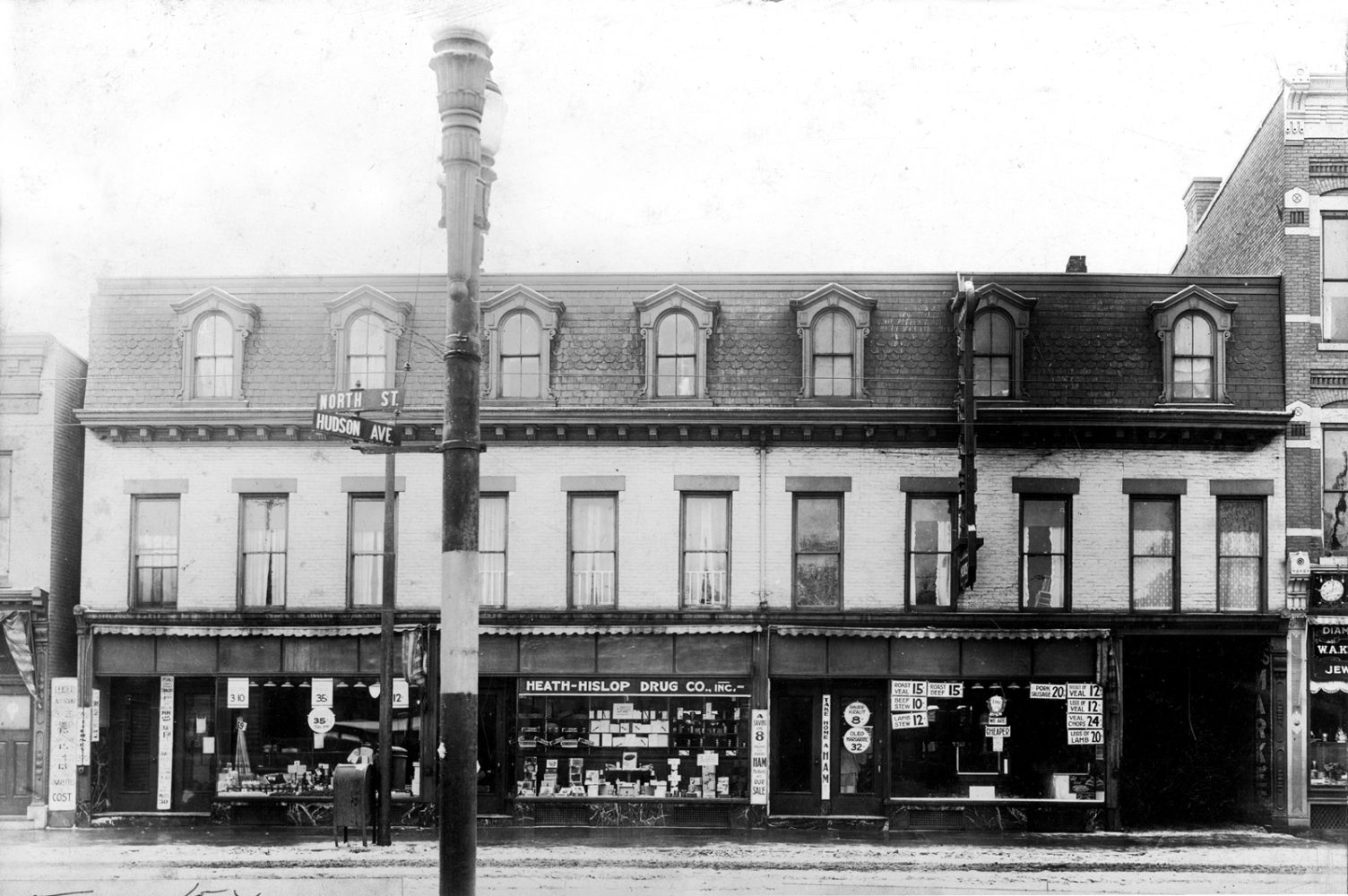

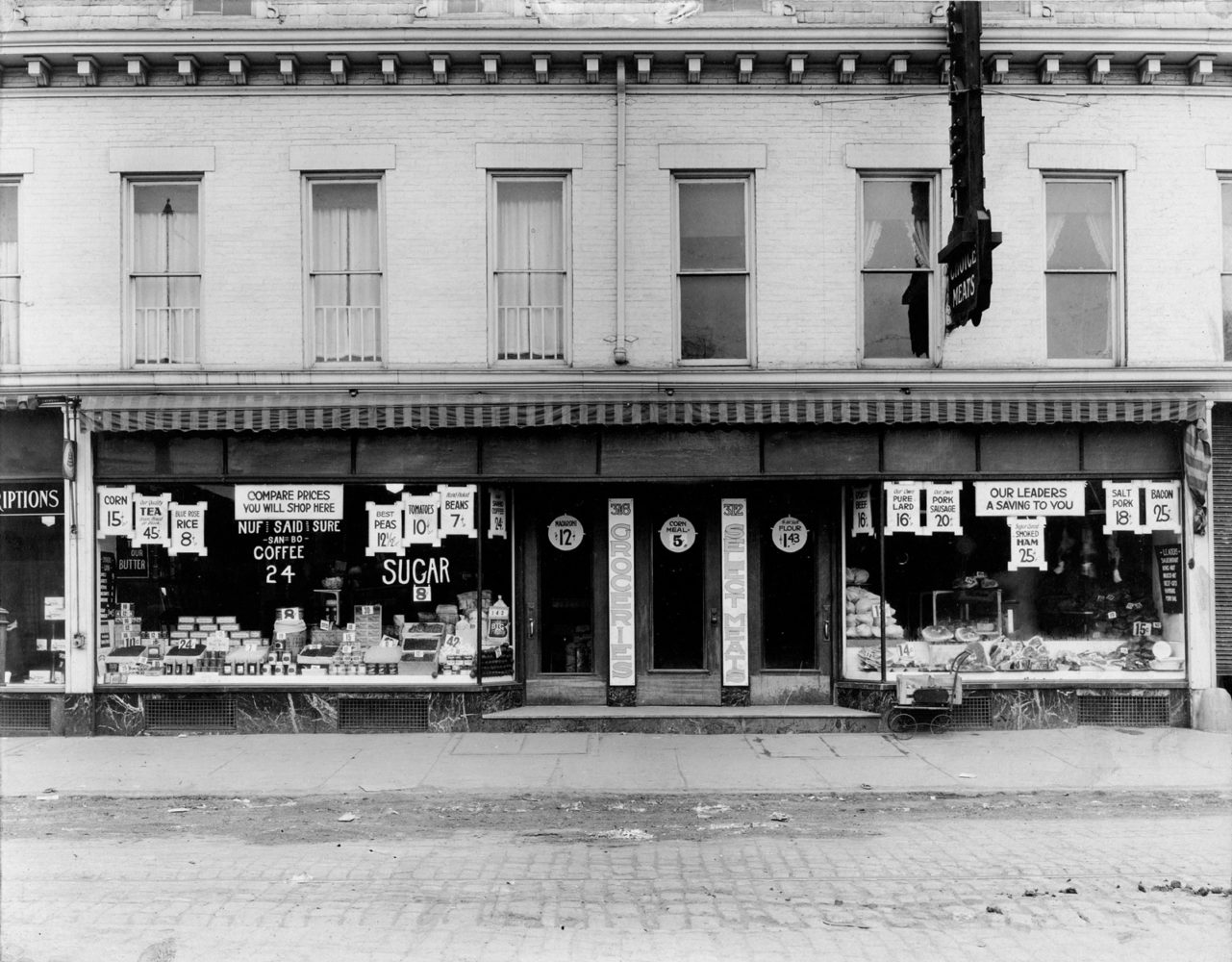
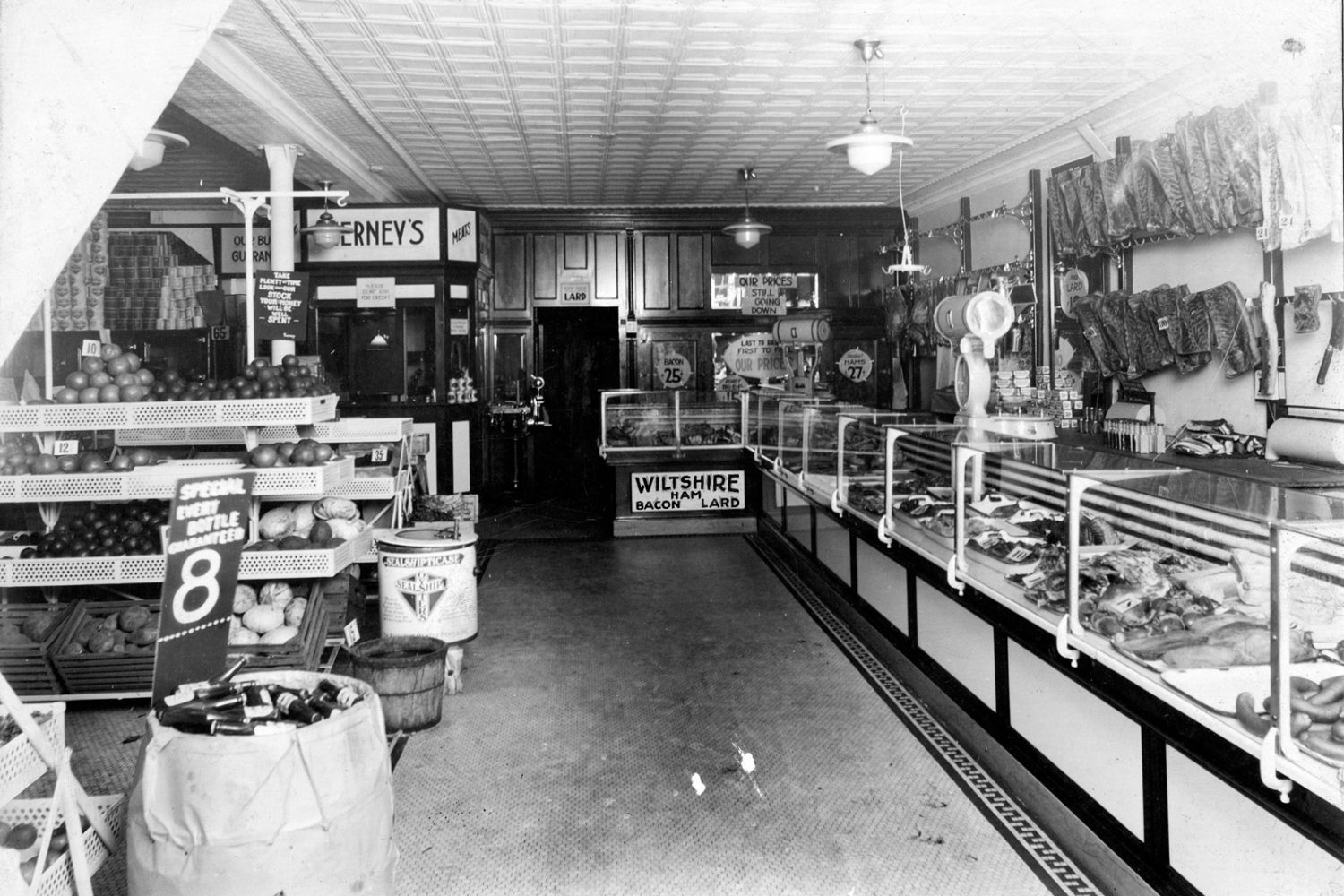
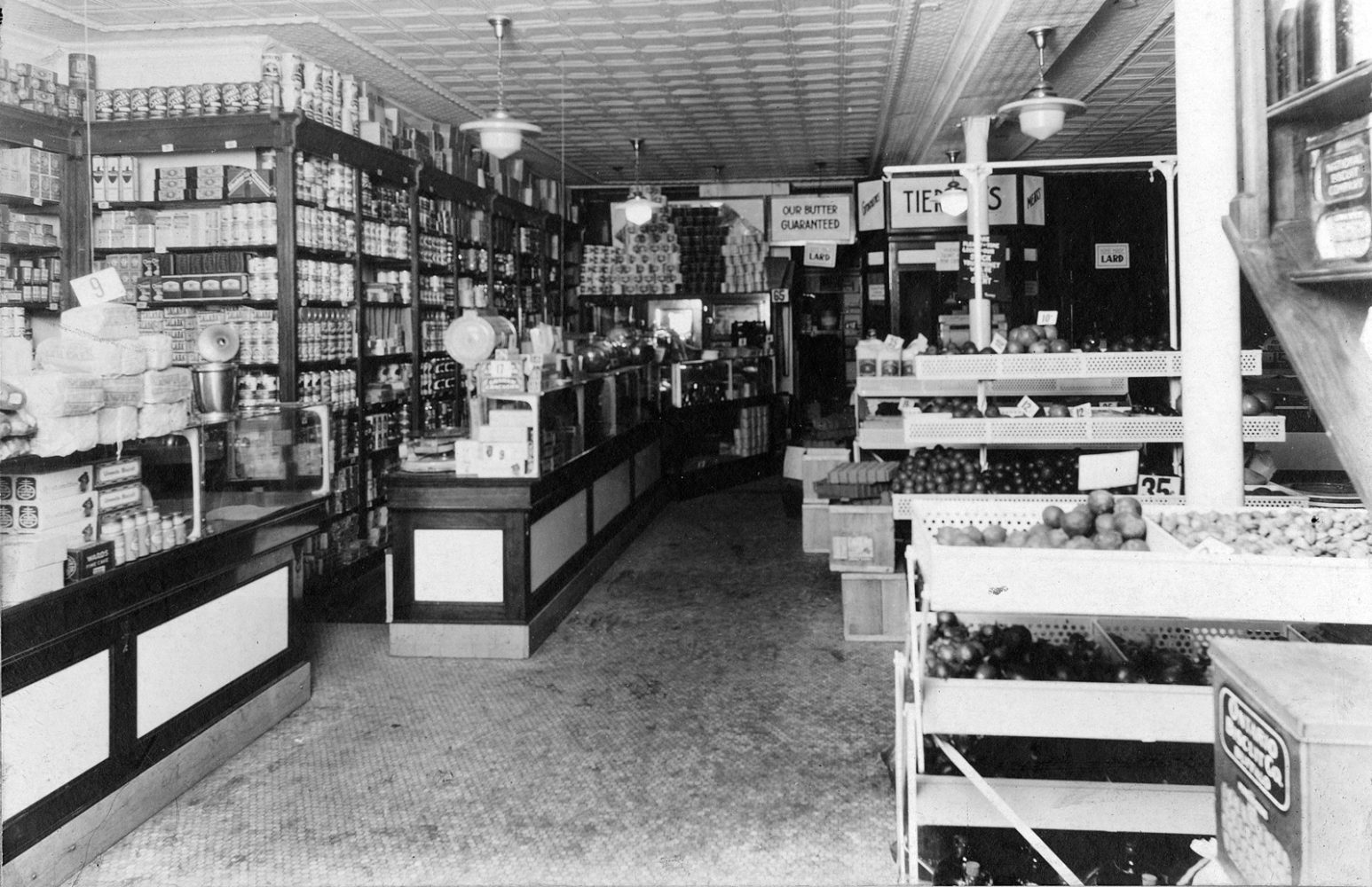
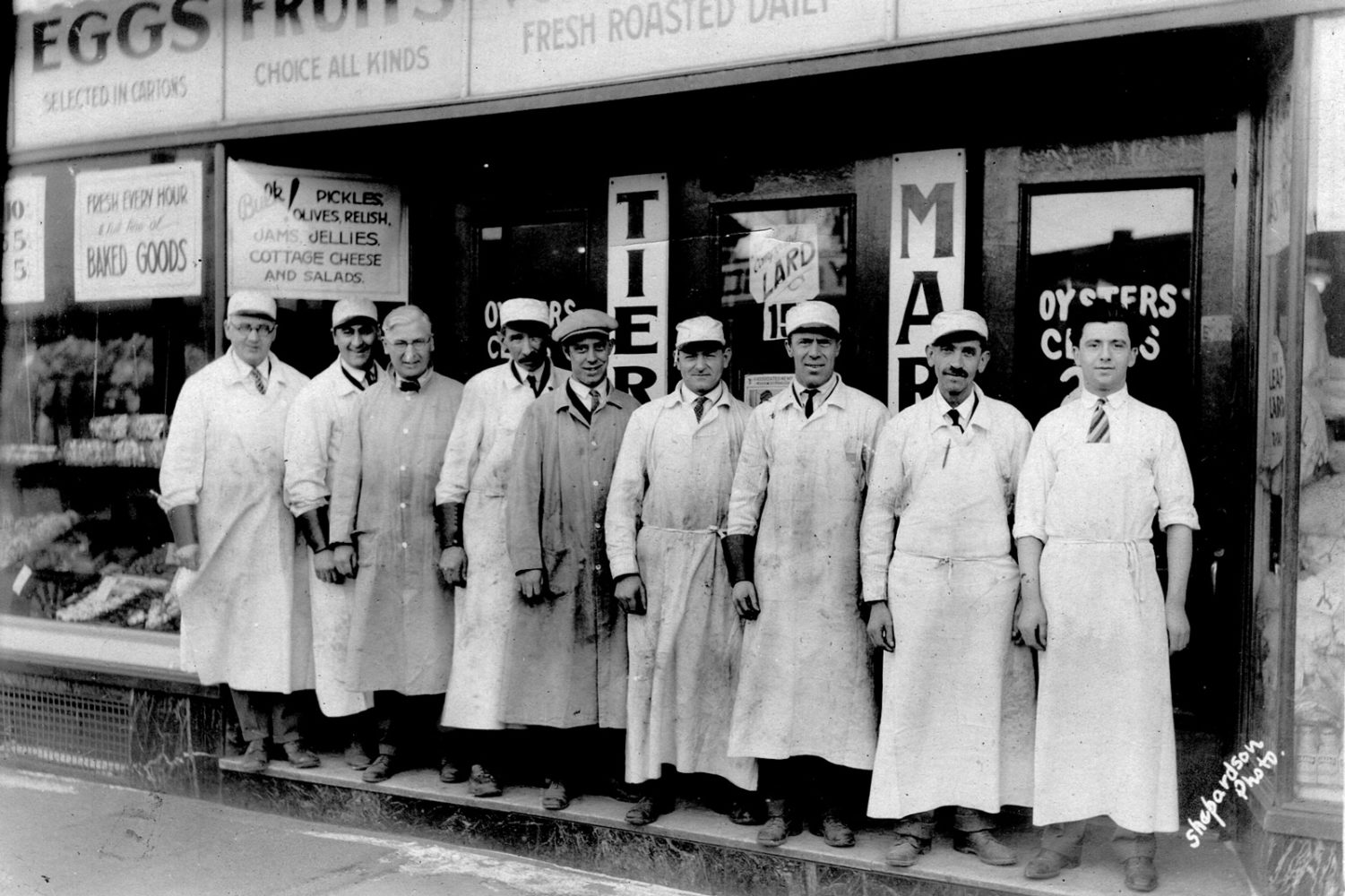
Ray Tierney was president of the head of the NY State Association of Civic Defense Leagues in 1933 when this article was published.
CIVIC DEFENSE LEADER BACKS MARVIN PLAN
Raymond J. Tierney Lauds Welfare Debt Refunding as Tax Aid
Condemns Criticism
Syracuse Points Way to Lower Rate, Rochester Merchant Says
Rochester, hard hit by unemployment along with most all other cities of the State, look forward confidently to a decided business pickup about the middle of March, according to Raymond J. Tierney, president of the Rochester Civic Defense League and head of the State Association of Civic Defense Leagues. Mr. Tierney was in Syracuse a short time this morning on his way home from Binghamton, where he attended a rally of the Binghamton Civic Defense League last night.
“Rochester is pinning its hopeś on a change of conditions with the incoming national administration,” Mr. Tierney said. “It won’t take much on the part of the new President to start the ball rolling. If he starts something, no matter how small it may seem to be, it will have just the right psychological effect on the people. I hope and believe that Mr. Roosevelt as President will set off just the right spark.”
Mr. Tierney had praise for Mayor Rolland B. Marvin in refunding to the welfare obligation, with consequent reduction in tax rate for 1933. In this, Tierney, business man, takes issues with the comptroller of his city who attacked Mayor Marvin’s plan.
“I have advised our city administration that I favor the manner in which Syracuse has deferred its welfare burden, the plan being to my mind considerate and fair to the now overburdened taxpayer,” Mr. Tierney said.
“If prosperity is just around the corner, as we are told by our financial experts, then in my judgement it would be well to associate prosperity with our relief burdens and thereby let our magnificent return to property help to consume the burden now resting so heavily upon our people.
“A reduced rate in some proportion similar to Syracuse, would enable our citizens who are now able to pay the present rate, to spend the difference on their property, thereby enhancing their investment and contributing to healthful employment and aid our community generally.
“Those unable to pay our present rate would be permitted the lighter burden, and could maintain their homes in which is invested their life savings.
“To my mind, arguments to the contrary are an admission that prosperity is not around the corner nor in the near future.
“I have urged our administration to give our burdened people courage at this time, which will fortify them to assume these obligations, with determination to pay them when conditions have improved.”
Mr. Tierney journeyed to Binghamton from Syracuse with John F. Murray, executive secretary of the Syracuse Civic Defense League and secretary of the State association. Both addressed the meeting held at the Bennent Hotel last night.
Mr. Tierney advised caution in consideration of an additional tax on gasoline sales by the Legislature, but was not definitely committed against a retail sales tax.
He proposed , however, in lieu of the proposed retail sales tax the legislation sponsored by the independent merchants providing for a multiple store license tax.
“This tax,” he said, “would be a franchise for every business, wholesale and retail, large or small, in the State of New York, returning approximately $25,000,000 in revenue, placing no burden on any business, taxing all without discrimination, its progressive measures equalizing the undue advantage now held by multiple units.
“The multiple system in the height of its efficiency and profitable operation along with all business can well afford this additional tax and the small man will be given the right to maintain his identity among his fellow citizens and also make for a healthy, civic minded, properly balanced community.
“This tax is fair and equitable and places the burden. where it can be best borne. If the bill is not passed, we must face a sales tax as a positive necessity.”
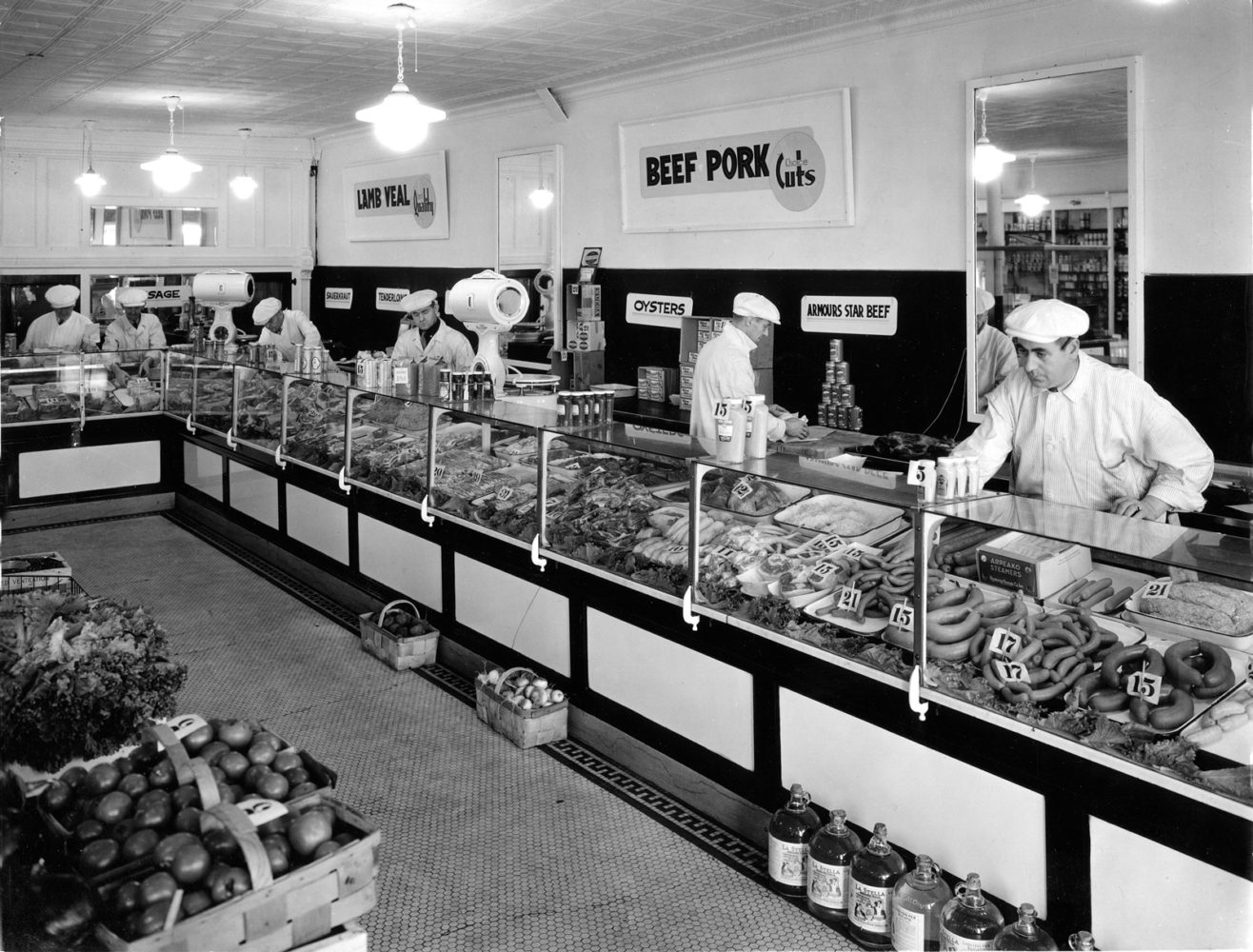
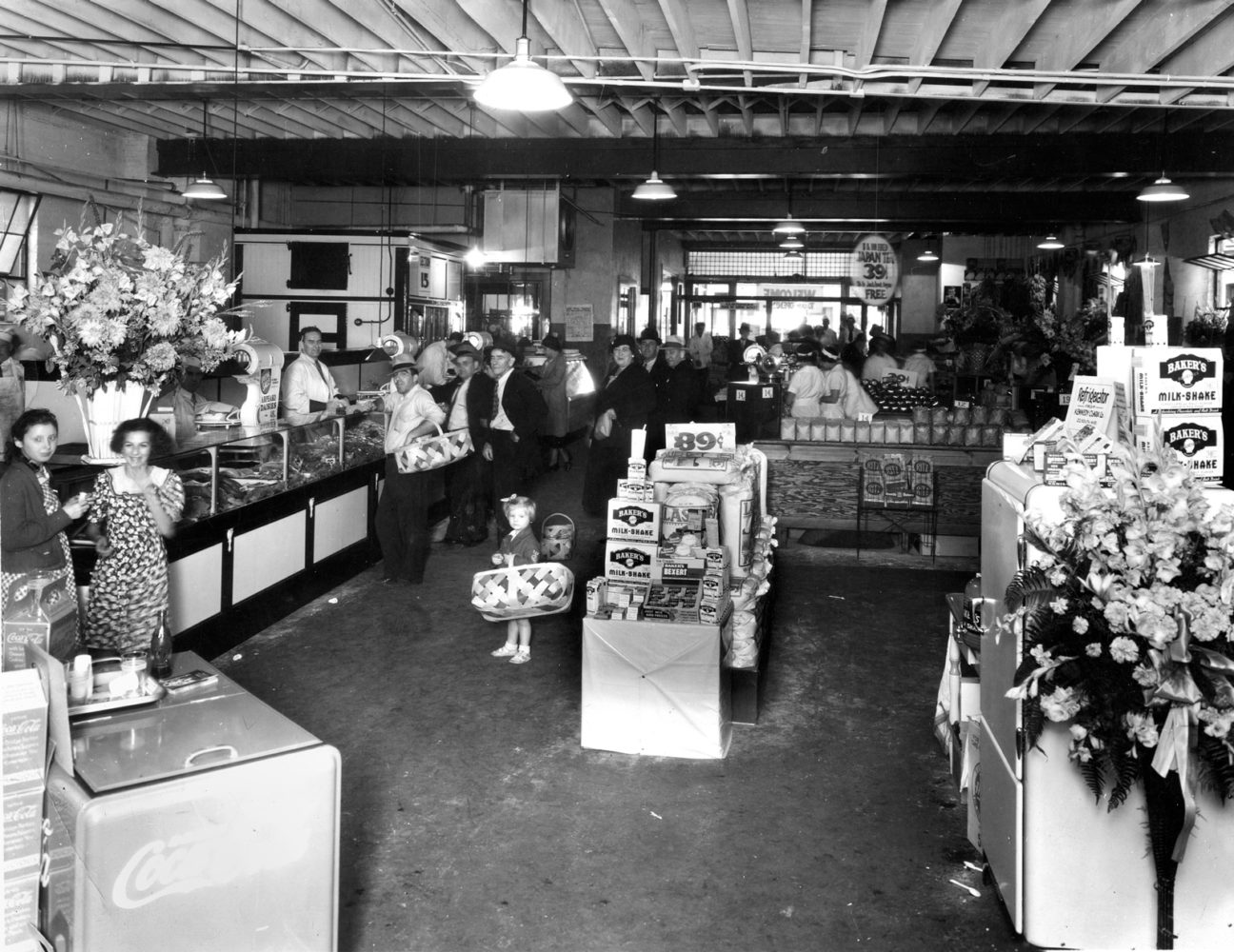
TIERNEY FOOD MARKET, INC.
999 – 1003 CLINTON AVENUE SOUTH
ROCHESTER 7, NEW YORK
43 YEARS YOUNG 1906 – 1949
TO OUR CUSTOMERS:
When we opened our first moderate sized meat market in 1906 at 312 North Street, the Flour City of Rochester was also moderate sized. It has continuously been our policy to be alert to modern merchandising trends. This has made our everyday’s work a pleasure, particularly so, since our growing list of friendly customers has reflected a most pleasant atmosphere in which to shop.
After 40 years in our parent store on North Street, it was deemed necessary to change our location. However, we opened our present store in l940. The wonderful reception we received from our new neighbors prepared us for the inevitable transition and in 1945 we closed our parent store.
Our transplanted roots had taken well in these greener postures, and as soon as the post var difficulties hed been settled, we embarked on our expansion program, which has been taking place over the past year and has increased five times our floor space. We deeply appreciate your tolerance in accepting the many unsettled conditions you were forced to endure during our expansion.
Meat has always been our specialty and we are entering the new lines with our age-old policies: QUALITY, FRESHNESS, AND A FAIR PRICE.
Remember! Because of you, we are!”
Sincerely,
TIERNEY FOOD MARKET, INC.
TIERNEY FOOD MARKET, INC.
999 – 1003 CLINTON AVENUE SOUTH
ROCHESTER 7, NEW YORK
OCTOBER 5, 1948
TO: OUR CUSTOMERS
WE ARE PLEASED AND PROUD to present two new coffees for your ENJOYMENT. These two blends sre the result of much testing by the directors of our cooperative wholesale grocery company. It is our way of getting around the abnormally high prices of the much advertised big-name brands. The two coffees will be know as:
“RGC” at 49¢ lb.
“225″ at 39¢ lb.
To introduce these two new products we are giving away three table model radios. For each pound purchased we invite you to deposit the slip with your name and address in the can provided. After the first five hundred pounds has been sold a name will be drawn for the first winner. This will be done after one thousand and fifteen hundred pounds also. All names will be left in the can for the three drawings.
We have ordered a coffee grinder so that each customer may grind their own as they like it. Unfortunately it hasn’t arrived but we a having this coffee ground three times & week to insure the freshness. We sincerely want every customer to try our new coffee, so please take a pound home and try it. If you aren’t satisfied please return the unused portion and the full prince will be refunded. All we ask is for you to try it end let us know.
Sincerely,
TIERNEY FOOD MKT INC.
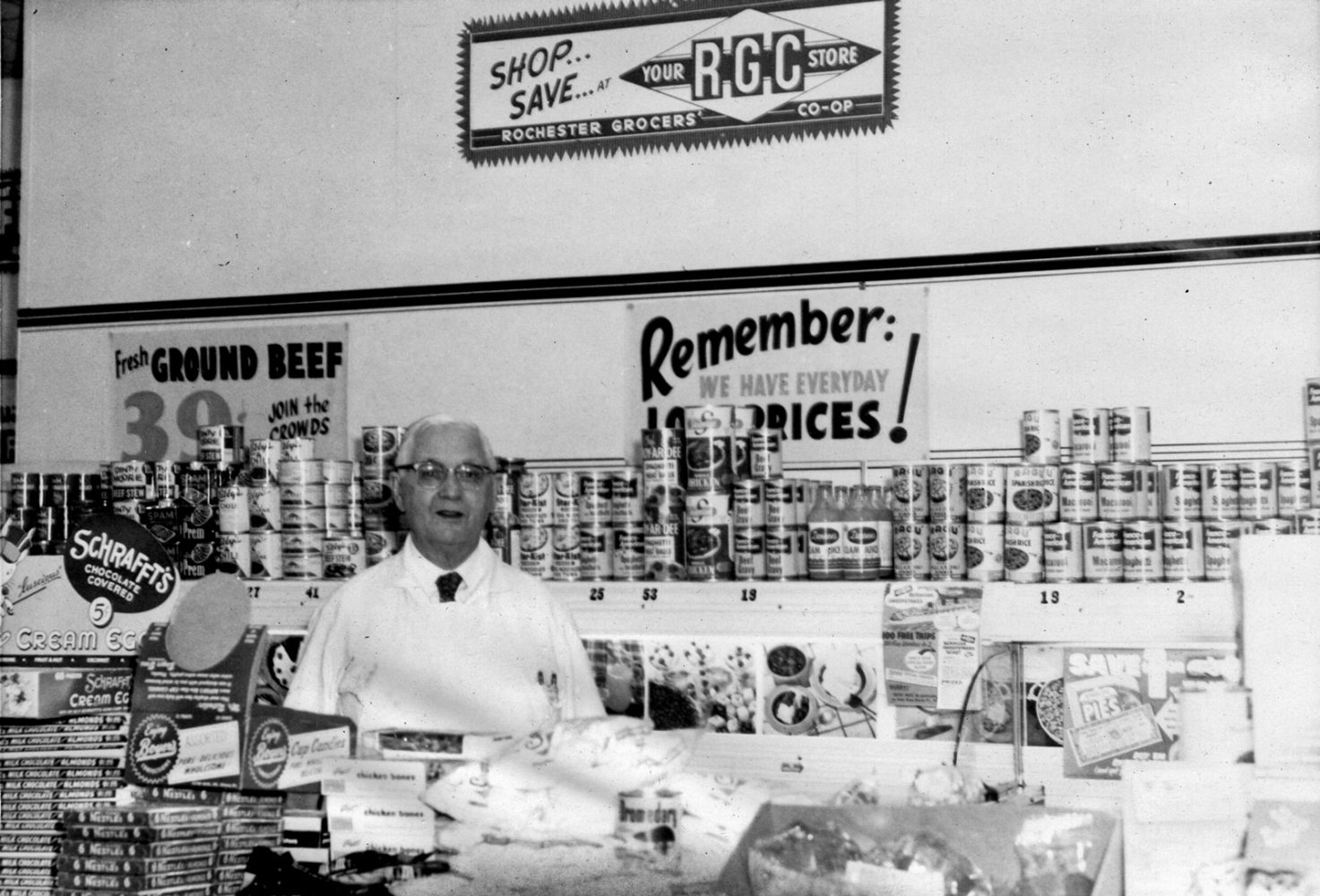
My mom shopped at my grandfather’s store on South Clinton every week and would bring home Animal Crackers for us as a treat. My siblings and I took turns going to the store with her and my favorite part of each visit was when my grandfather would cut a big slice of liverwurst and hand it over the counter. I loved grinding coffee for my mom at the machine he had at the end of one of the aisles. In the early 80s I did a painting of Ray Tierney behind the butcher counter for a show at Pyramid Arts Center. The floor in his store was covered with sawdust and the tile pattern was so memorable. I took a photo of it a few years back when the India House had taken over the building.
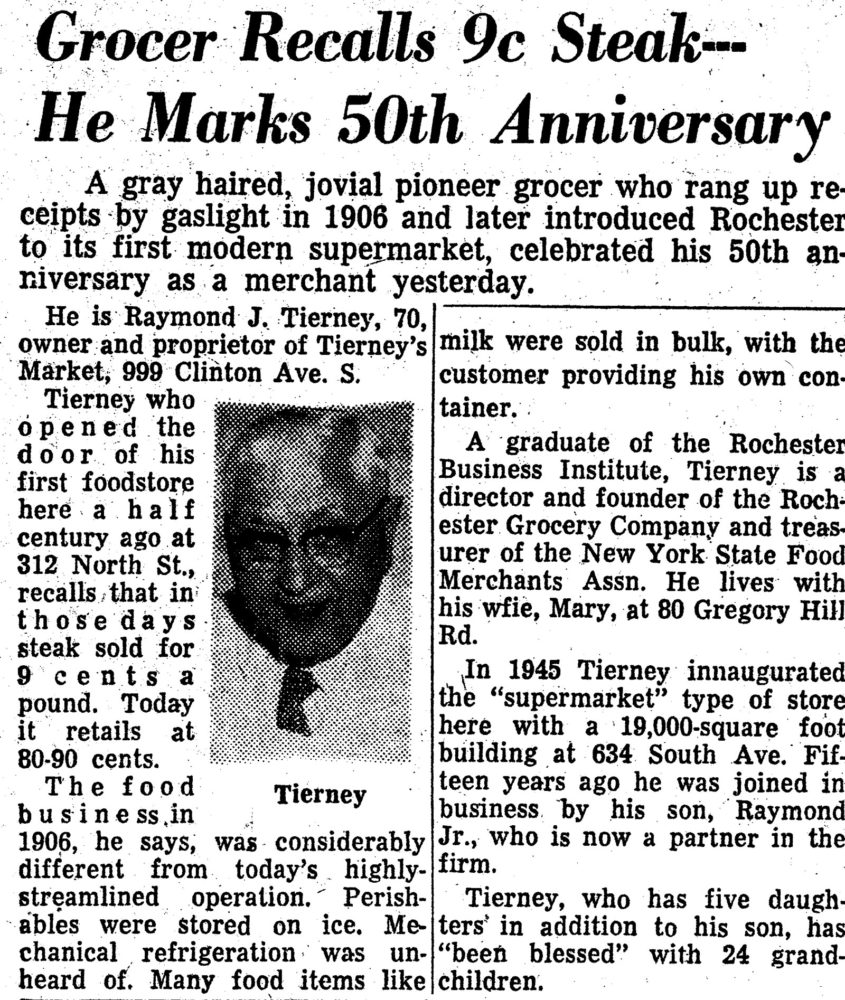
Audio Recording of Raymond J. Tierney
Nick Nixon, a radio DJ for WBBF in Rochester, interviewed Raymond J. Tierney at his store on Clinton Avenue South on the occasion of its 50th anniversary. The radio piece was entitled “Raymond J. Tierney, Father of an Entrepreneurial Family.” Ray Tierney lll has a reel to reel copy of this radio show.
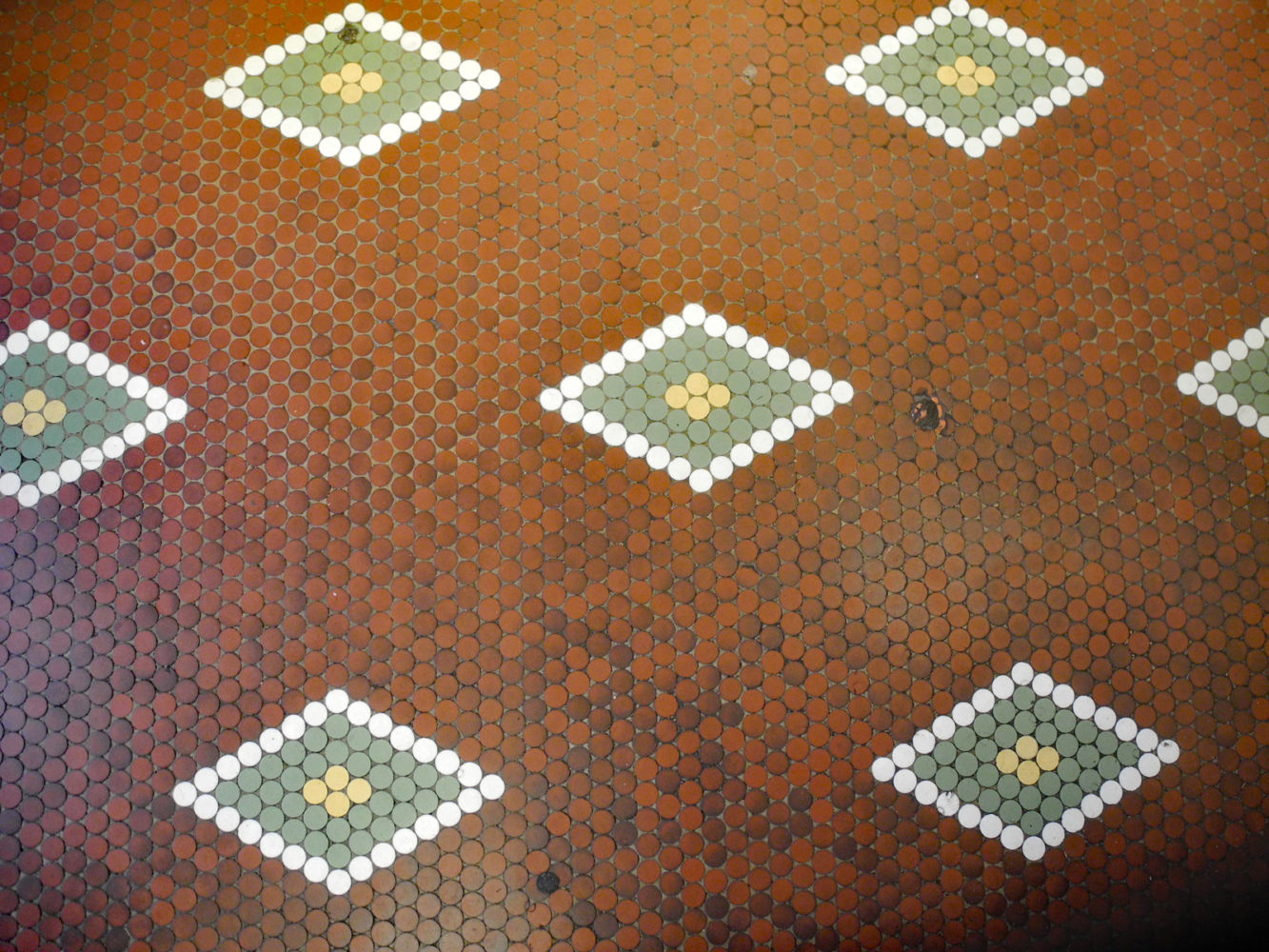

Ву Rad Hаrris
Seventy-six years old and still going strong!
That’s Raymond J. Tierney, grocer extraordinary, who operates Tierney’s Market at 999 S. Clinton Avenue with his son, Raymond, Jr.
Believe it or not, Ray has been in the grocery business for 56 years. At the age of 20 he opened a store at 312 North street and when he was 54 he opened another at his present location on S. Clinton Avenue. He operated the North St. store for 39 years before selling out in order to devote his full time to the new market which has now been in operation for 22 years.
As a food merchant his entire adult life, Ray can’t help but be an expert on the economic problem facing all small businessmen. He believes the independent grocer definitely has a future. He puts it in these words: “The progressive grocer has a definite future if he is forward looking.”
Chains vs. Chains
Thirty years ago Ray was president of the Rochester Civic Defense League, an organization of small merchants, mostly grocers, banded together for their economic safety. This writer was secretary of the League. In those days the great fear was chain stores, but today that fear has largely disappeared. No longer is it a case of independents fighting chains; today the big competition is between chains fighting among themselves,
Ray has served as president of the Monroe County Food Merchants’ Association and for two years served as president of the New York State Grocers’ Association. For 22 years he has served as treasurer of the state organization.
Despite his age, Ray still is active in his store at 999 S. Clinton Avenue. The real boss is Ray, Jr. but the real expert is Ray, Sr. Father and son work closely together and today the two have plans for a huge supermarket in the Penfield area on a plot of land they own.
“Stay Active”
How does a man 76 years old retain so much pep and vinegar that he can still look ahead and plan for a new supermarket that will rank with the best in this area? We asked Ray to give us the answer to this question. Grinning broadly, he answered in two words, “Stay active.”
Staying active comes natural to Ray. For anyone to see him behind the counter of the meat department of his store, he would think that Rochester’s oldest grocer is a youth of 50.
Ray is indeed a veteran Rochesterian. He was born in Rochester in 1886. His mother was also born in Rochester in 1854. The Tierney family then lived on Pearl Street. Ray’s mother died in 1944 at the ripe old age of 90.
Tierney’s father was born in Ireland and came to America with his parents when he was only three months.
Believes in America
Ray has tremendous confidence in the future of his country. The triple orbit in space a few weeks ago by John H. Glenn thrilled Ray just as did all Americans who followed the history-making flight on TV or read about it in their daily papers.
Like millions of other Americans, Ray is inclined to believe that Glenn’s flight was the first in history. The Russians claim they sent a man in orbit months ago but there has been no proof. Glenn’s flight was mađe with the world looking on; the Russian flight, if there was one, was made in deep secrecy followed by a massive propaganda drive.
Ray attended Corpus Christi School, RBI and RIT. When he left school he got a job in the tool and die business, but very soon there after went into business on his own when he opened his first grocery store at 312 North street
With 30 grandchildren, Ray is running Harry Crowley a close second. Crowley has some 35 grandchildren. With six children, Ray finds that his one and only hobby is his family. The grocery business of course, is a hobby, too, but his family comes first, and that’s the way it should be.
Recently Ray became a member of the Rotary Club. That may become a new hobby, for already he is boasting to his friends that, “I am Rotarian now.” He is also a great guy who has given much to his community, and who has done a great deal for all small merchants of the state both by deeds and action.
Wilmot Building in Corn Hill
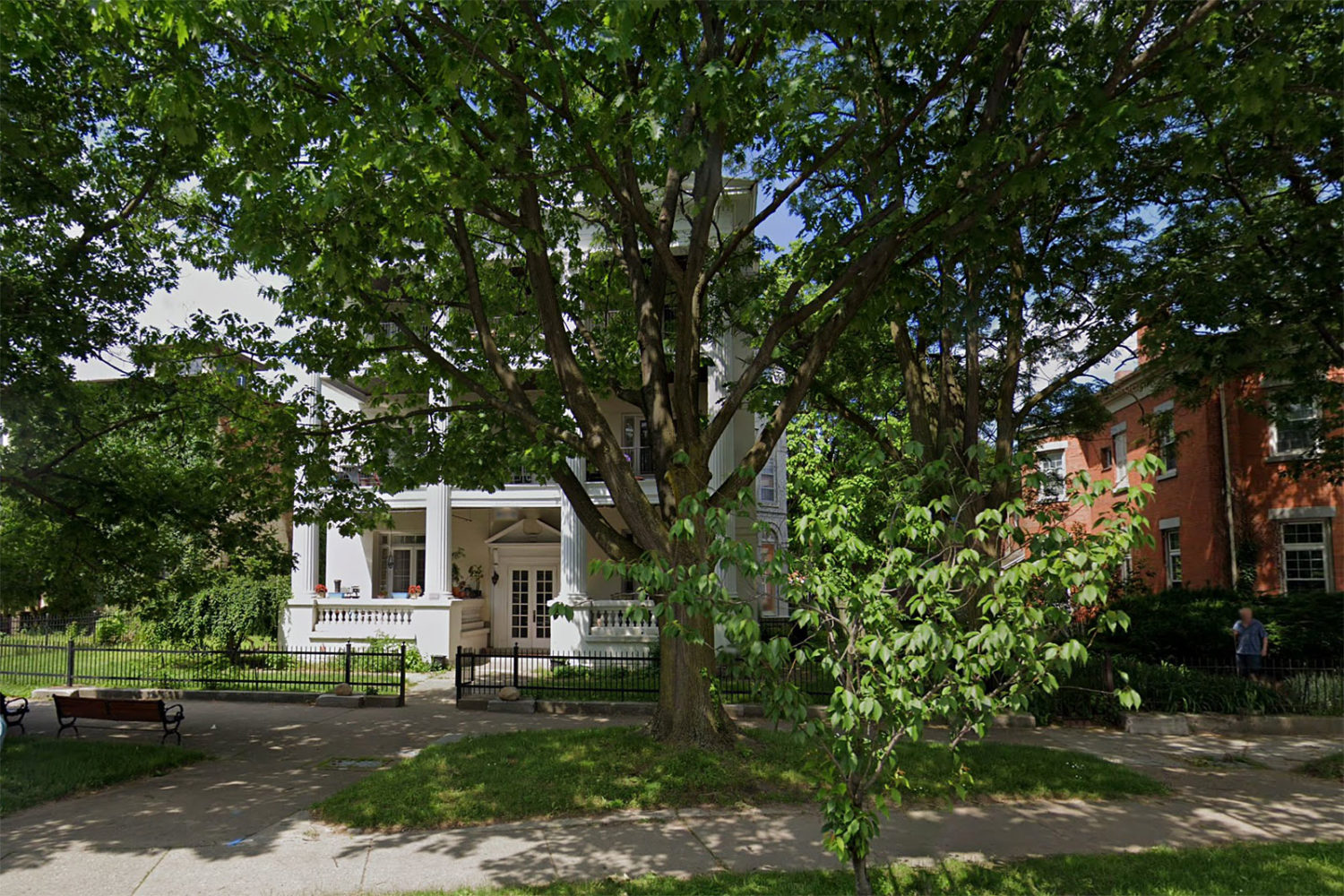
Originally the home of railroad magnate, Byron McAlpine, the white building at 275 South Plymouth Avenue was at one time owned by Raymond J. Tierney and his partner, Leo Held. Built in 1886, the high Victorian brick home fell into disrepair when the McAlpines passed. In 1913 my grandfather and his partner bought and restored it, converting it into apartments which they rented for many years. They called the building “The Wilmot.” It is still an apartment building today.
Historian, Kitty Galbraith, interviewed Raymond J. Tierney in 1977. Listen below:
With the information she gathered from this interview Kitty wrote the piece below about the Wilmot building.
The Splendor Has Departed
by Mrs. Kitty Galbraith
709 Aspen Road Starkville, Ms. 39759
In the pleasant city of Rochester, New York, there is a building to fall in love with. It is a handsome structure of porches and columns and ambience. Although it is vacant and boarded-up, it retains dignity and charm like an aristocrat down on his luck. It is the old Wilmot Apartments in the historic Third Ward.
Bounded by the Genesee River and the Erie Canal, the Third Ward Is the neigħborhood where the young city’s first families built their splendid mansions, and lived their genteel lives. But by the 1960’s the Erie Canal was a paved street, and the Third Ward had become a slum, and the Wilmot a residence for welfare recipients.
Because it is located in what had been the city’s finest resideutial neighborhood, the plight of the Wilmot seems especially poignant. Closed by order of the city, and vacant for years, it sits slowly crumbling. Paint is peeling from the tall Corinthian columns, and the cast granite balustrade is cracked. Glass, bricks and chunks of concrete litter the yards and porches. Marble from the entrance foyer has been pried out, and much of the central staircase is gone.
Yet all around the Wilmot are signs of a dramatic neighborhood renaissance. When it looked like Urban Renewal would destroy most of the Third Ward, the Rochester Landmark Society went into action. Working with the City Council and the Urban Renewal Agency, a rehabilitation program was begun. Instead of slum clearance, the area got a conservation program. Much of the valuable architecture was saved.
But not the Wilmot. Why had the Wilmot remained decaying year after year? Why had the Wilmot not benefitted from the Urban Renewal Program? What happeñed to the Wilmot?What was it’s story?
The story of the Wilmot could begin when the land was “an ash swamp filled with water most the year”. So wrote Judge Moses Chapin describing what the settlement was like in 1816. Later, Sophia Street, named for Colonel Rochester’s lady ran through that swamp, and the Erie Canal crossed it, and a young lawyer named Byron D. McAlpine came to town and set up
offices on the Buffalo Road.
When Sophia Street became South Plymouth Avenue in 1857, the lot was vacant. Mr. Bronson had built his Greek Revival brick at 151, and Mr. Sage had built on the other side. The lot became an address in 1886 when Byron McAlpine built an imposing brick home on the site. From the details still intact on the north and south sides, the style seems to have been high Victorian.
That house became the McAlpine family home. But by 1913, Miss Florence McAlpine, the only person the city directory listed at that address, had moved out to East Boulevard. The house was vacant. And that was when two young men in their late tweuties saw it and were interested. They were Leo Held and Raymond Tierney.
Leo Held has been dead many years; but Raymond Tierney spoke long and lovingly about the Wilmot. Не was 93 уеars old at the time, and death was just two months away.
“I’ll never forget that McAlpine family home,” he said. “They were very wealthy. Railroad magnates. They built that house like a fortress, They built it to stand 200 years. Those brick walls were so thick.”
“We did it because we were Rochesterians, and we were young, and we had a great feeling for our city”
Ray Tierney
It was Leo Held who saw the empty house first. Не соnvinced Tierney that they should try to buy it. They were partners in a real estate venture. They wanted to remodel the McAlpine mansion into an elegant apartment house. The price was $24,000; and Darrell Sully of the Genesee Valley Trust Company was the executor of the McAlpine estate.
Tierney laughed as he recalled how Sulley’s white beard shook with anger at their offer of $15,000 for the place. Sulley called Tierney “a young whippersnapper”, but said he would put their offer before his committee.
“You’re going to lose it, Ray,” Held told him. But they didn’t. With $5000 cash and a loan from the Albany Savings Bank, it was theirs.
The partners hired an architect, Howard Nurse, to draw plans for the transformation of the house into an apartment building. Nurse’s plans called for a third floor, a rear addition, and a change in the facade that would not diminish the integrity of the original building.
“We kept those McAlpine bay windows on the sides;” he said. “The front had those ‘same arched windows with the rose medallions, but we took them out. We wanted that big expression of glass across the front. And boy, did we have it!”
The support of their Third Ward neighbors was very important to them. “When we showed those people the drawings Nurse had done for our project, they almost clapped their hands.” Tierney went on to say that the houses around their place were well-built for prominent people; and they could not put up anything that was not up to the other places. “It was a very lovely neighborhood, and we built accordingly. And when it was finished, the Wilmot was a monumental and beautiful thing.”
The partners were going full blast with their building when tragedy struck. Raymond Tierney’s young wife died when their second child was sixteen days old. Their first child had been stillborn. “It knocked me silly. I told Leo I was pretty well shot.”
He offered his partner his share of their venture. But Held begged him to stay. He offered to do all he could to help him in his grief. So Tierney took on all the detail work. For one solid year he spent all his time there. Не decorated every room. He went all over town picking out
wall paper so that each apartment would be different. Не even hired an out-of-work artist to hand paint designs on the walls of the entrance hall.”Nothing splashy. All dignity. It was a lovely thing to walk into.”
A lot of Raymond Tierney went into the Wilmot. “It was my salvation.” And in the process, some of the burden of grief was lessened.
“Terrible things happen to you. And you weep over them. Later things turn out all right.” (A year and a half later, he met and married Mary Walsh who survives him. She was a mother to his small child, and they had six of their own.) Raymond Tierney’s eyes lit up that day as he recalled all kinds of details about the Wilmot: the steam vapor heating system installed by the Unsmeyer Company; the hardwood floors put down by the Adams Flooring people; the blue and white awnings from the Sabey Company; the cast granite balconies on the first floor porches made by George Kirchner, master mason; the three story wooden columns, made and installed by the C. H. Rugg Company. (“They had quite a time. They did not have the hoisting facilities that we have today.”)
And where did the partners get the name “Wilmot” they gave to their building? Tierney said the Wilmot-Castle Company was in Rochester that time. “That’s Sybron today. It was a good company. Very respected. So we took the dignity of the name for our building.” Tierney hastened to add that the Wilmot-Castle Company had no connection with the James P. Wilmot of Page Airways.
When the Wilmot was completed it had 18 apartments. There were six units on each floor. Those in the front were the most spacious. They were also the most expensive. They had their own private porches. The rent for them was $50 a month. That rent was quite a bit if a person only made $2000 or $2500 a year, Tierney pointed out.
The C. F. Garfield Company was hired to acquire the tenants and draw up the leases. Since Mr. Garfield lived across the street, they knew he would be selective in his choices. Their first tenants were people with good jobs. People with standing in the community. People who no longer wanted to maintain big houses. People who wanted to be near the heart of the city. A check of the 1915 city directory reveals those tenants buyers for downtown businesses; local government people; were: a teacher; a chemist; an insurance man; some retirees; and so forth. They were a good cross section of the middle class. “The right people”, said Mr. Tierney.
Mr. Tierney had a picture he was very proud of. It was a photograph of an attractive couple sitting in a snappy roadster in front of a very posh-looking Wilmot. He wasn’t sure but thought that they might have been among those first tenants of the Wilmot. Someone who wanted their picture made in front of their new home. Frozen in time, the couple, the car and the Wilmot recapture an eloquent image of the past.
The Tierney-Held partners operated the Wilmot for three years and sold it. “It got to be cumbersome.” They did not lose money on it. He estimated the total cost of the purchase and conversion came to $55,000. They sold it for $68,000. They did not expect to make a big profit in those days. Things were cheaper then. Workmen, masons, materials, etc.
From 1918 when Tierney-Held sold the Wilmot to two tailors named Kovel and Kappel, the building’s fortunes seemed to be on the decline. There were ten owners during the 1920’s. Some of the parties owned it more than once. Then there were four more owners during the period from 1930-1937. Then the Albany Savings Bank took the property for four years. (That was the bank Tierney-Held borrowed from in 1914.) Three parties owned the Wilmot during the 40’s; one owner had it during the next two decades. But from 1974 there seems to have been several.
Studying the list of owners and the dates, one is left wondering if the rapid succession of owners in the 1920’s was part of the rampant financial speculation of that period that culminated in the “crash”.
In the Department of Buildings and Property Conservation at the Rochester City Hall, there is a file on the Wilmot. It is a thick file. The documents it contains seem to tell the story of the cow that had been milked dry. There are documents that contained warnings about everything from tree. limbs and junked cars to the final listing of the 278 housing code violations. And finally there is the demolition hearing findings, dated 3/28/74: “Building represents an immediate health, safety and public welfare hazard….owner is hereby directed to commence demolition of said property”.
For some reason, the order was never carried out. But the reading of random documents in the Wilmot’s file seem to spell out the doom of the fine old building. It is like reading the case history of a dying patient. Still there are documents that seem to offer hope. There are petitions from concerned Third Ward neighbors. They are addressed to the Commissioner of Buildings and Property Conservation, and to the Judge of the State Supreme Court. They urged that the “fine building” be saved from demolition; and that they owner “…be instructed to sell or rehabilitate the property.”
And there is a letter from the Landmark Society. They have given the building their second highest rating. They believe it has sufficient architectural and historical merit to make it worth saving. Mrs. Harrington, the Director of the Societysays they consider rehabilitation a feasible alternative to demolition, and a preferable one. “If the owner would like assistance in promoting the sale of this building to a new owner, we would be glad to give publicity”.
The city itself, is interested in the fate of the Wilmot. Back taxes are still owed on it. Taxes that go back to 1974. In July of 1977, the city started foreclosure proceedings, but the present owner paid a portion, 25%, and made arrangements to pay the balance. Something he has not /done.
There are many people who are interested in the Wilmot and feel keenly about it. Lowell Colvin is one of them. Не is the developer of the Ellis East Complex on East Avenue. The Landmark Society regards him highly. Colvin said that the rehabilitation of the Wilmot would give the whole Third Ward a lift. “It is in a pivotal position and it has a lot of charm”.
Colvin said he would have liked to develop the Wilmot and several adjacent buildings into a pattern the way he did the Ellis East Complex. There would have been parking in one area, recreation in another, and green land in another. “That’s the only way it would work”, he said.
Colvin made an offer to the present owner of the Wilmot. But there was the matter of the back taxes. If the city would forgive the taxes to a new owner, he might have been able to swing the deal. “The business of the back taxes made the venture economically unfeasible;” he said sadly.
Al Rayburn, who lives in the neighborhood is another person who hates to see the Wilmot the way it is. “What a crime. So many people are interested in it. But it just sits there. People coming up Plymouth see it and say: ‘Wow! What a fabulous place. Why hasn’t something been done about it? ‘ And everybody and his brother wants to buy it.”
One person who cares about the Wilmọt and knows it well is Steve Baldwin. When he was a student at the Rochester Institute of Technology in 1967, he lived in the Wilmot. Не remembers that there were some fine detailing in his apartment. The dining room had bay windows and beautiful wood-work and plate rails. The rent was $250 a month, furnished. The rent would be shared by several students who would share an apartment.
Baldwin remembers that the place was very run down, with only the minimum of maintenance. “Once we were wi thout the use of the kitchen sink for three weeks,” There were no beautiful hand-painted designs on the entrance walls. And the wall paper that Mr. Tierney had gone all over town to procure, was covered with years of cheap paint.
But even then, Baldwin felt it was still a special place. He went inside the building one summer during a neighborhood arts festival. The desolation, vandalism and ruin were shocking, he said.
Can the Wilmot. be saved? And at what cost? What kind of federal money is available?
Justin Streb, a rehabilitation specialist for the Bureau of Redevelopment, Department of Community Development, says that money from the Section 312 program is available. “I talked with the owner of the Wilmot last year. I outlined the procedure. But the main hitch was the back taxes. 312 money becomes a mortgage, the taxes must be current.”
Streb said the owner indicated that he might try to sell the place.
The 312 program (HUD) was set up for rehabilitation of property like the Wilmot, Streb said.
It is money that can be borrowed at 3% simple interest, with up to 20 years for repayment. “The maximum loan límit has been recently increased to $27,000 per unit.” The Wilmot has 18 units, so that is quite a bit of money, he remarked.
The procedure to obtain the money is to work up a package with an architect’s floor plan, a write-up of specifications, and a work write-up showing what is to be done. The package is then sent to HUD for approval. The procedure takes from three to six months.
As to how much it would cost to restore the Wilmot, noone has any definite ideas. “A quarter of a million on up;” Streb thinks. Al Rayburn, a contractor, thinks that figure isn’t conservative.
But he hastens to add that he has not seen the inside lately and would have no way of knowing. “It has central cores for the plumbing, heating and electricity, and that would make any rehab job easier;” Rayburn adds.
And what of the owner of the Wilmot? His name is McKinley Tarbel, and no one seems to know who he is. He has no address or telephone number, and can only be contacted through his lawyer. Lowell Colvin has talked with him and says the man would like to sell the Wilmot at a reasonable price, and get out from under it. Other Third Ward neighbors have not been successful in reaching him, even when they had prospective buyers for the Wilmot. To them, the owner remains an elusive shadowy person.
The city seems to have the deck stacked. The fate of the Wilmot remains ultimately in the city’s hands. They can either insist on force compliance with the demolition order of 1974; or/complete payment of over $12,000 in back taxes. If the taxes remain un-paid, the city can foreclose. $18,000 seems to be the amount most people think the owner wants for the Wilmot. That plus the amount to cover the back taxes. However if the city forecloses and sells the property at an auction, all the back taxes are forgiven.
Meanwhile the Wilmot sits there, decaying a little more with each passing day. “How foolish we were to lavish so much effort and pride on that building;” Mr. Tierney once said. “But we did it because we were Rochesterians, and we were young, and we had a great feeling for our city, and we wanted to do something for Plymouth Avenue.”The Wilmot could use someone like Raymond Tierney today .
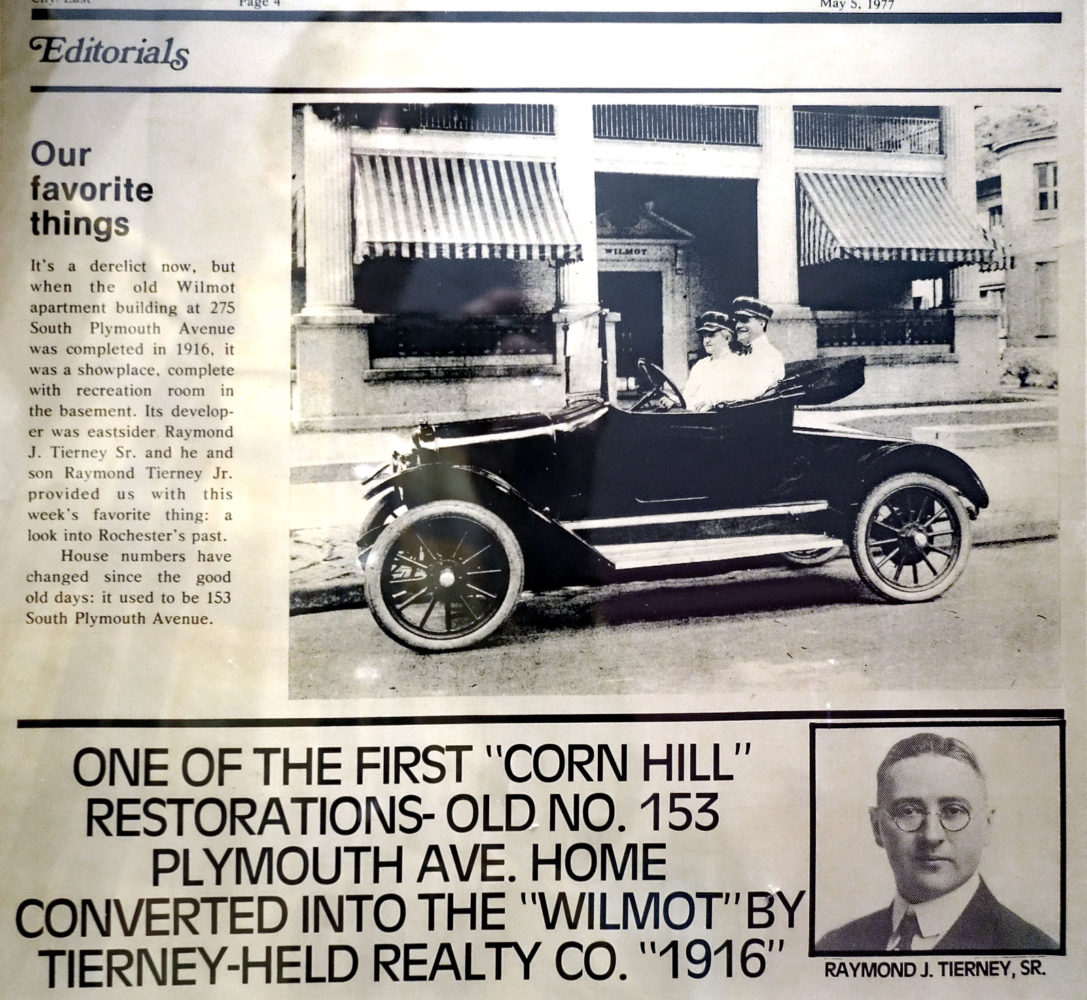
The article below from the Democrat & Chronicle describes another renovation of the Wilmot Building in 1983. The article quotes Ray Tierney.
The Road Not Taken
by Raymond Tierney
(Written in June of 1974 by Ray J. Tierney Sr. 1886-1978)
Standing at the gate with humility,
born number eight in a family of eleven,
my mother sought to inspire helpfulness.
Her Poem
Life is like a mighty river,
flowing from day to day.
Men are vessels launched upon it,
sometimes wrecked and tossed away.
Some succeed at every turning,
fortune favors every scheme.
Others who are quite deserving,
have to puli against the stream.
Do your best for one another,
making life a brighter dream.
Help the tired and worn out brother,
pulling hard against the stream.
At this writing I am 88.5 years old, as my mother said . . . “with every child should come a blessing.” I have found through my lifetime the proof of her wisdom. As a young boy I saw strength and patience with a large family and the limitations placed on the breadwinner. My action was to do better.
I spent nine years at Corpus Christi School, entered high school for a short time, with the aim to become a lawyer. Conditions would not permit. My father was an expert toolmaker, I decided to follow. I entered the tool factory realizing my father’s skill brought forth many inventions.
I determined to fit myself for completion of my effort to bear fruit. I attended Rochester Institute of Technology for three years, evenings. But as a youth I worked as a delivery boy at a Food Market Saturdays, plus my paper route with the Union Advertiser, 160 copies daily. Hoping to advance my business skills I enrolled for a course of day classes at the Rochester Business Institute. To obtain experience I worked at a Wholesale House as a bookkeeper. Returned to the tool shop for increased earnings.
The love of reliability remained in my mind. Now at age twenty a reach for the future. With the help of an older brother I purchased a Meat Market in April of 1906. As a boy I matched wits with older men. Made slow progress for the first year but with the advice of a good mother I carried on. “Time was of the essence” she said. I purchased a $40,000 building, brought my sister and brother with me and no project seemed to too large. This was my progress. I will now cover my 68 year adventure.
A boy being very anxious to learn. No record of or credit a missing asset but with $400 I secured and $125 plus a dream my outlook was meager. First day sales $13 with spirits high each day advanced my hopes. With determination and the will to work at . . . much all proved well. As I have said from Organized Society with the fruits of commerce brought forth many sustained . . . local growth and gave growth to our great country. This page the results of a young start.
To solidify an honest effort I added my sister to my crew and also my brother from a foundry to improve his health. Also a younger brother whose handicap held him unemployed. The baby boy of my family was in school when I finished this journey. Now the Tierney blood trust was born and the final result was Tierney Food Market Inc.
I was never proud but always grateful as I set about to improve all things around me. First to install electricity, replaced all equipment as rapidly as possible. I installed a seventeen foot electric sign, “Tierney’s,” with 105 bulbs, the first blazer from Main Street corner. I purchased the building in 1912. Then stores, 8 apartments and livery way which I made into the Northway Restaurant. I added modern refrigeration in 1912 and enlarged the store 100%. I brought this location to a bright spot.
Added Actions:
It seemed I had turned a corner as blessings one after another came. Memory strained actions now to give as others also gave to me, life and faith to carry on . . . my mother and father.
I came upon one of the happiest days of my life . . . a home purchased for my mother and father. The smile on my mother’s face will always be with me. When any problems came she always helped me to keep faith.
Now six years added to my life to dream of the future, to those who much is given much is expected. I came in contact with many people and I felt able to judge but little we know what is in store for us. So if crosses come, it’s only to mould your life and I accept my crosses, and life has been good to me beyond my greatest hopes.
From my earliest days I have felt it is the duty of all to leave this world a better place from when we found it. Family life to me was a gift. When success formed on me I wanted to take my place that I would be a part of God’s plan.
In the year of 1911 I met a very young lady whose background was as mine with honesty of purpose by both of us. We were married April 23, 1912 in St. Boniface Church with a similarity of aims.
Three years of planning were fine but someone with wisdom beyond ours planned otherwise. Our first child was born still . . . and we accepted our fate. The third year a girl was born . . . but Laura died. That cross was heavy.
The success of my youth survived to deal my very life but with the responsibility of a little girl, 16 days old. I made the determination to carry on and as my mother said, God is good.
A sister of Laura gave my little girl of herself and great care for which I am eternally grateful. As time wore on I returned to my mother’s influence and Sunday morning to Corpus Christi Church. Where fate awaited me. Mrs. Walsh, a constant patron at my store, at this pre Holiday Sunday in passing suggested I give care to her Holiday supplies. Being accompanied by her daughter whom I had never met but admired very much. An introduction followed and the following Sundays brought close friendship. The results molded the rest of my life.
We were Married May 10, 1916 with mutual understanding a family of three was formed, our future planned, Years passed with profound satisfaction. As the time enfolded to us a son was second born, great joy, but in four days where death came to our son. One of life’s crosses again and a determination to hold fast to our faith. Two years later a son came, May 22, 1922, followed by the grace of God a daughter, Isabel, next blessing Martha.
Two years later Mary and finally Ann. Now a home so blessed grew in unison. Mother and I crossed many a hurdle, my partner with a powerful gift of motherhood, carried on with skill. I devoted myself to being a worthy breadwinner. There is nothing more I can say. Our family speaks for itself. We are grateful.
Life after all grateful, Mother and I tried to show our appreciation for many blessings. I was a trustee at St. Ambrose Church for 35 years, also I was a trustee at the Catholic Charities for fifty eight years. I gave myself to my industry for many years as President of the State Food Merchants. Thirty three years as Treasurer. Slugged through the Depression as did my fellow citizens. Extended my interest into the real estate business 1921, President of the Tierney Held Reality Co.
I operated two stores with my son, Raymond Tierney II, who served his country during the Second World War. Sold North Street store in 1939, continued 999 South Clinton with my son on return from service. Took a burden off my shoulders made 999 South Clinton an outstanding store and building.. A little history . . . I opened first Super Store in Rochester at 634 South Avenue, 19,000 square feet, destroyed by fire in 1939.
My grandfather James Tierney came from Kings County Ireland. His first son, my father, Edward J. Tierney was four months old. My mother was born on Pearl Street in Rochester, New York. My grandfather, James Maloney had a record of 32 general engagements in the Civil War, his two sons, Martin and James, served in the Civil War. My grandfather Tierney operated a Nursery for Moulson’s & Co. My mother and father were married in St. Mary’s Church in Rochester, New York and were parents of eleven children.
I was fortunate to be our number eight. In today’s standards our family would be unpopular. Serving families in the same century where my Grandfather’s life was spent plus my parents’ closeness permitted me to acquire a family record. From this heritage I was inspired to carry on. My older sister died at the birth of her fourth child. My older brother died at 39. He being a Meat Man and as a young boy acquired the dream for Market Operation, contact with various buyers, brought forth a talent I have and enriched my family of six. The result thus far . . . thirty one grandchildren, 2 great grandchildren. As I considered a career in my living room, in my rocker, with 3 generations engaged in the Food Industry, Raymond J. Tierney Sr., Raymond J. II and Raymond J. III. I was made aware that the apple does not fall far from the tree.
A special thought crossed my mind; Mother with 83 years + Father with 88 years = 171 years. Two with but as one come 171 years.
As I sit and look out upon the summer vegetation around, I saw there God. As the large trees in our yard shed their foliage and return their fruits where planted, so my shrubbery ends, they are gone to their final reward. But year after year their handiwork is stripped by ice and frost.
Then spring comes to explain our faith in a power greater than our own, my gratitude is sustaining. My prayer would be that my grandchildren and great grandchildren use and never abuse the talent God gave them.
Still looking for brighter days tomorrow!
Raymond J. Tierney
Tierney Family Photos
In 1920 Ma and Pa Tierney, Ray Tierney’s parents, celebrated their fiftieth anniversary at their house at 208 Lyndhurst Street. and posed for this photo. Maime Tierney and Ray Tierney, my grandparents, are shown in the upper left. My Aunt Rita, the first of six Raymond Tierney children, is showing in a white dress at the bottom left.
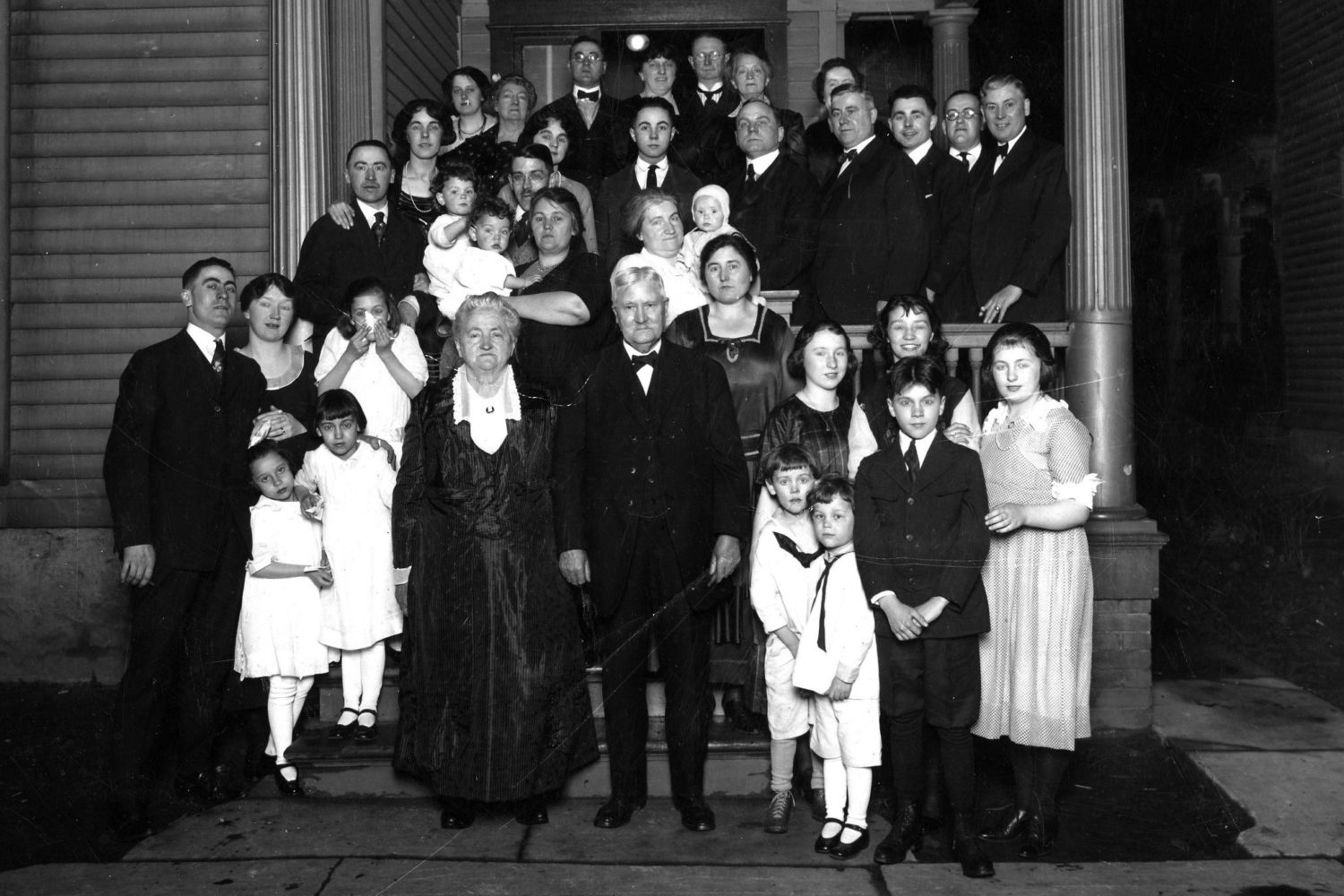
Ray Tierney became Ray Tierney Sr. when his son, Ray, was born and Ray Jr.’s first born was named Ray so there were three at one time. All three were in the grocery business. I spent my formative years working in a grocery store. As Ray said in his memoir, he had six children and thirty one grandchildren. I wish we had a picture of the whole family. Here are two.
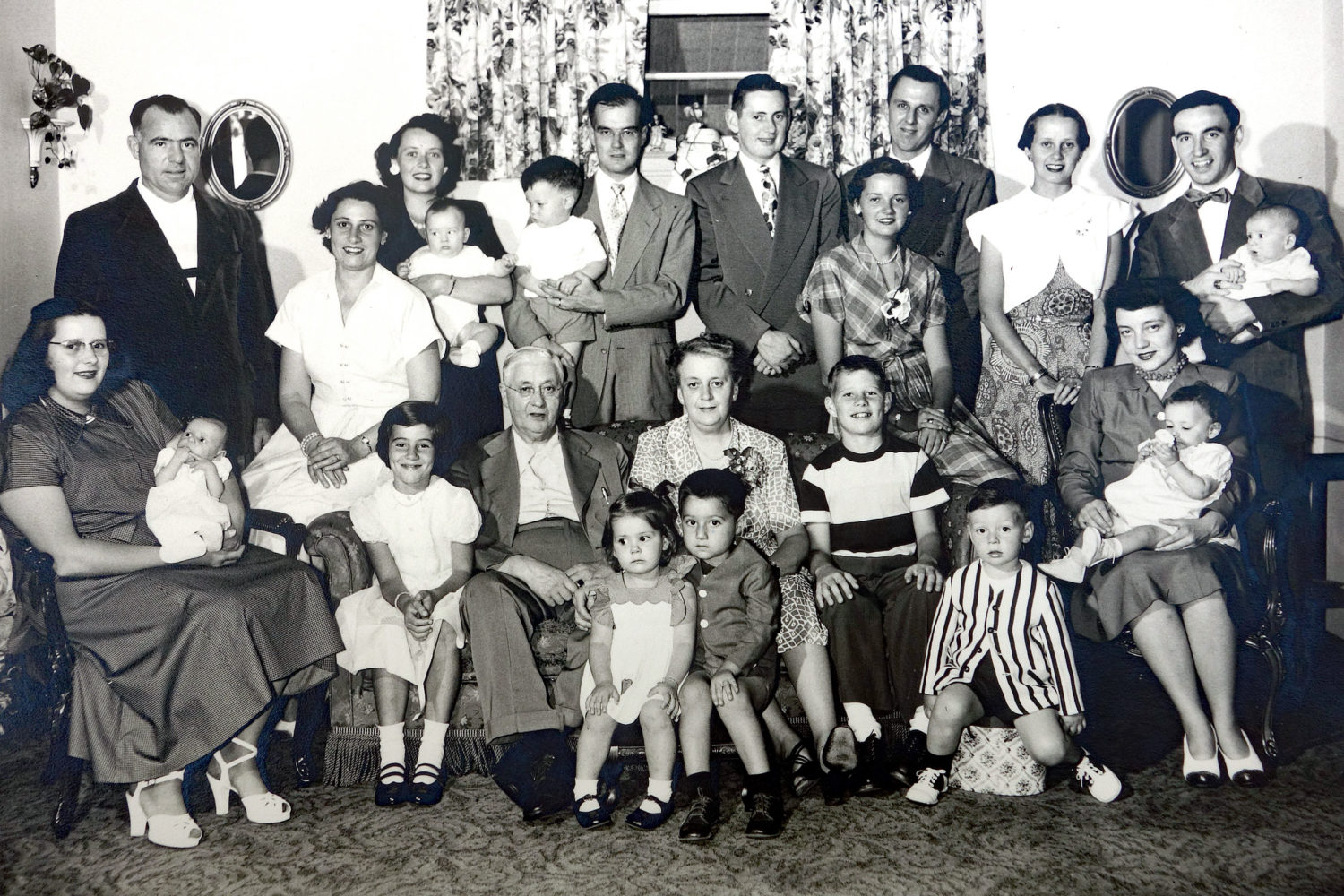
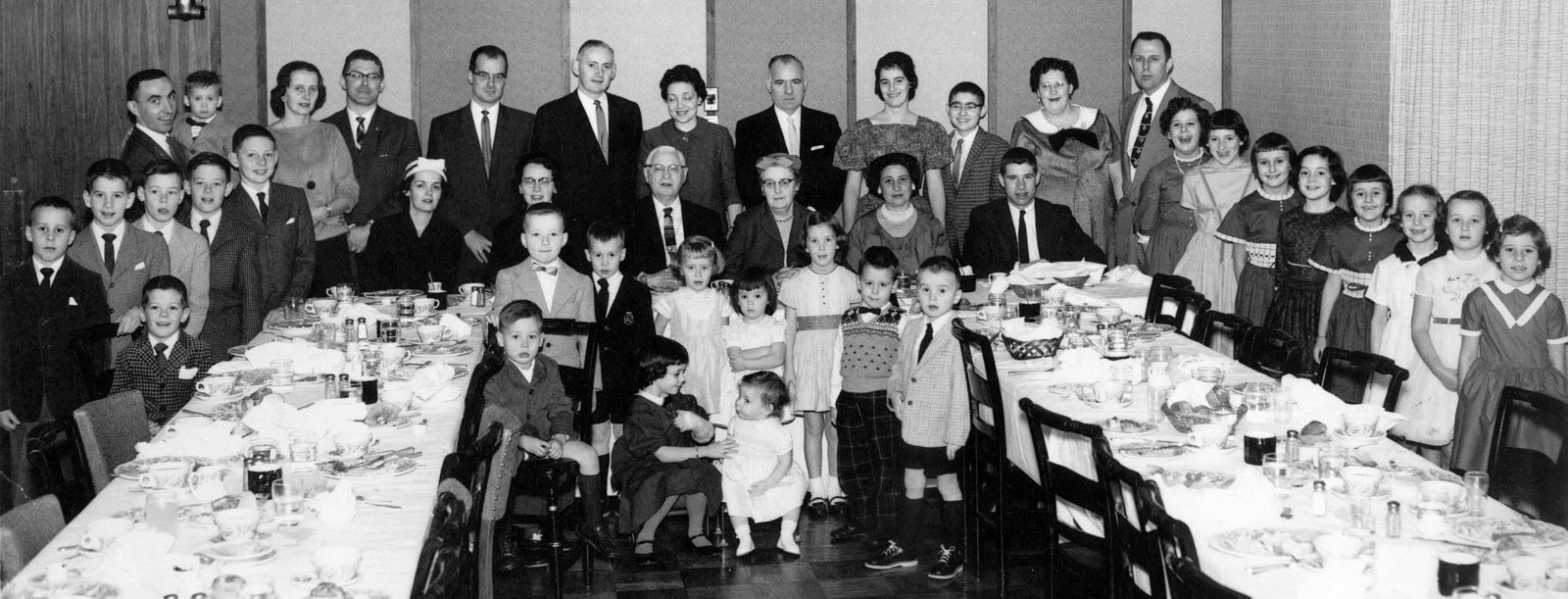
More extended TIERNEY PICTURES can be seen here.
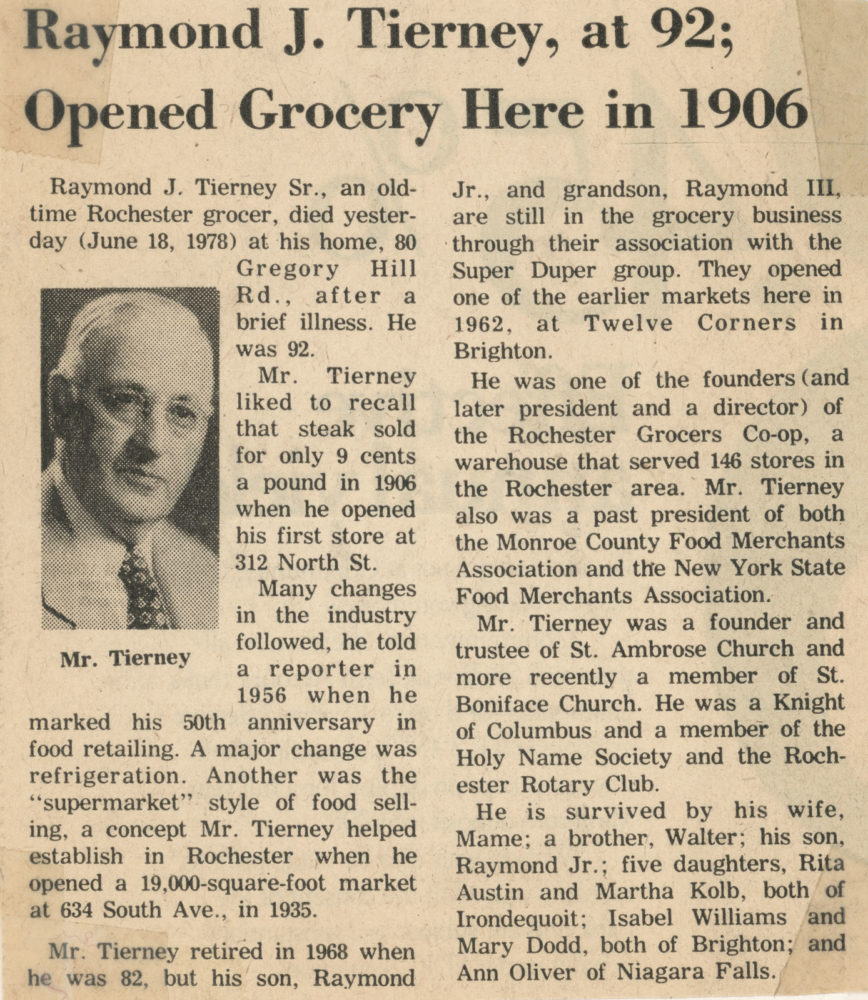


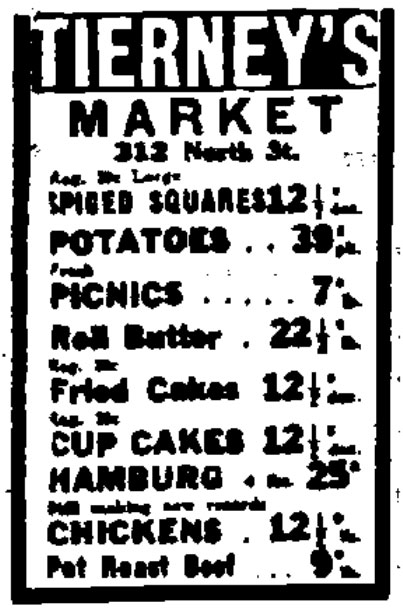
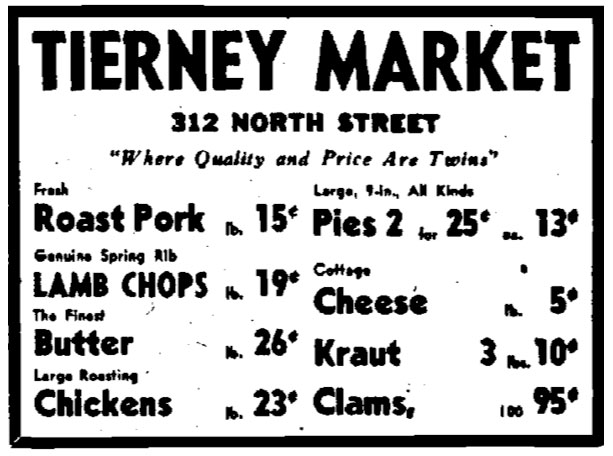


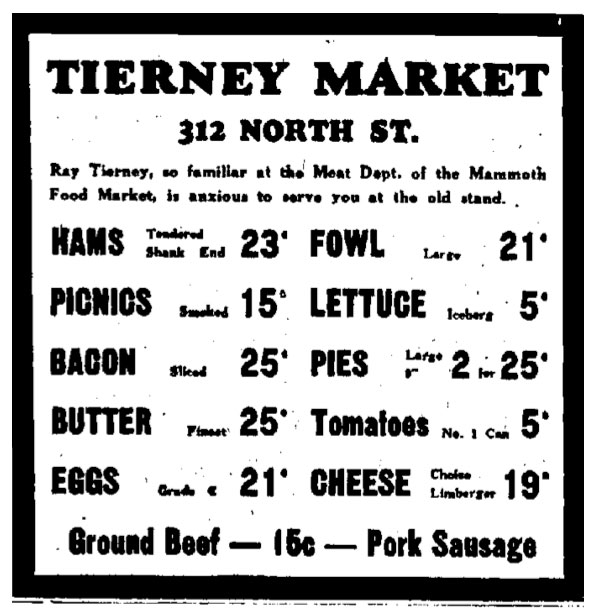
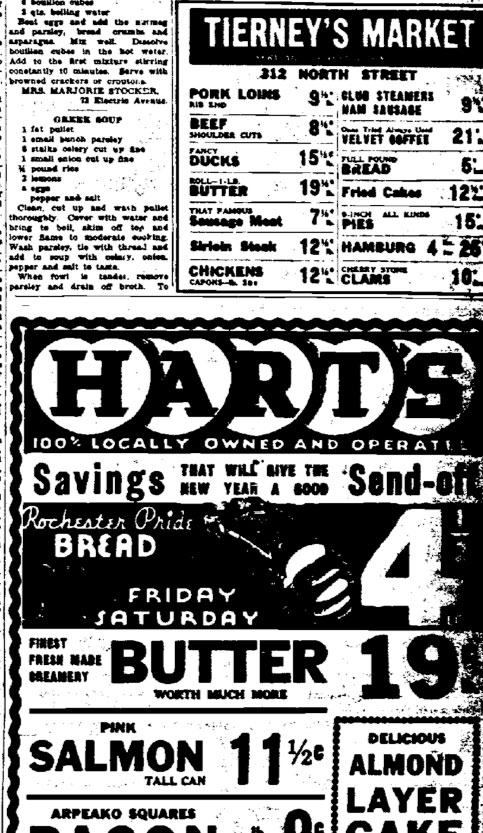
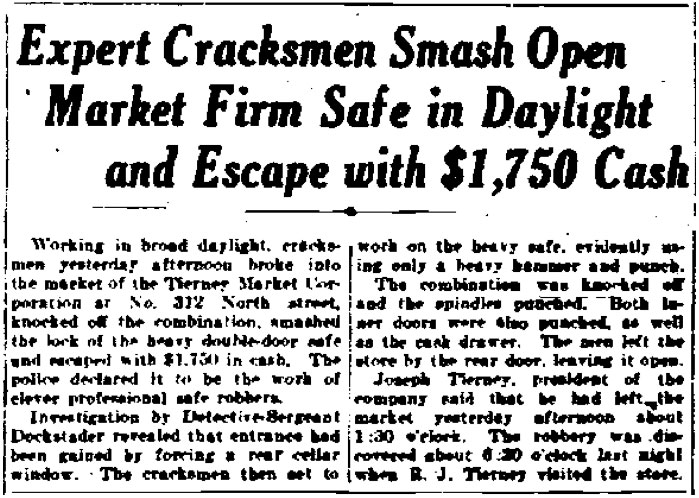
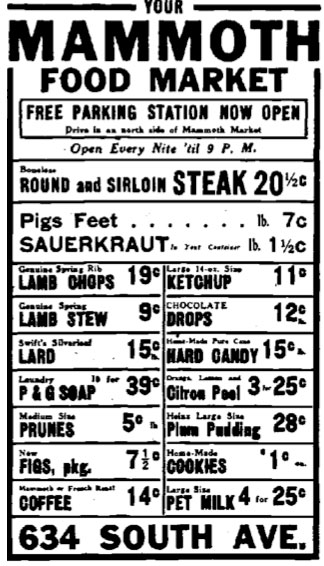
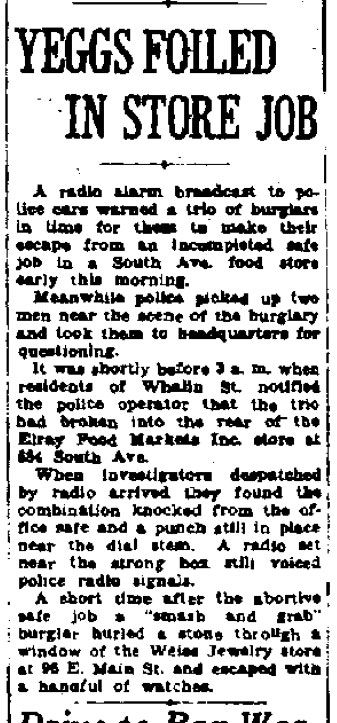
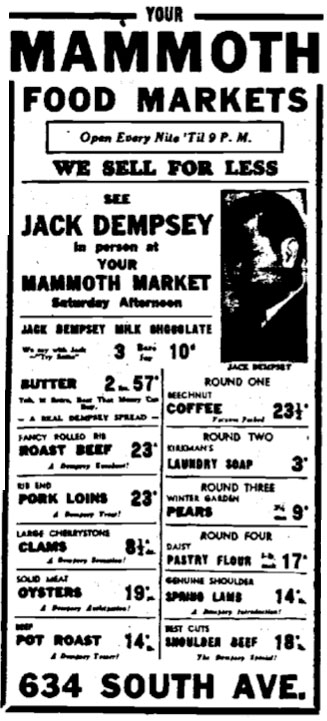
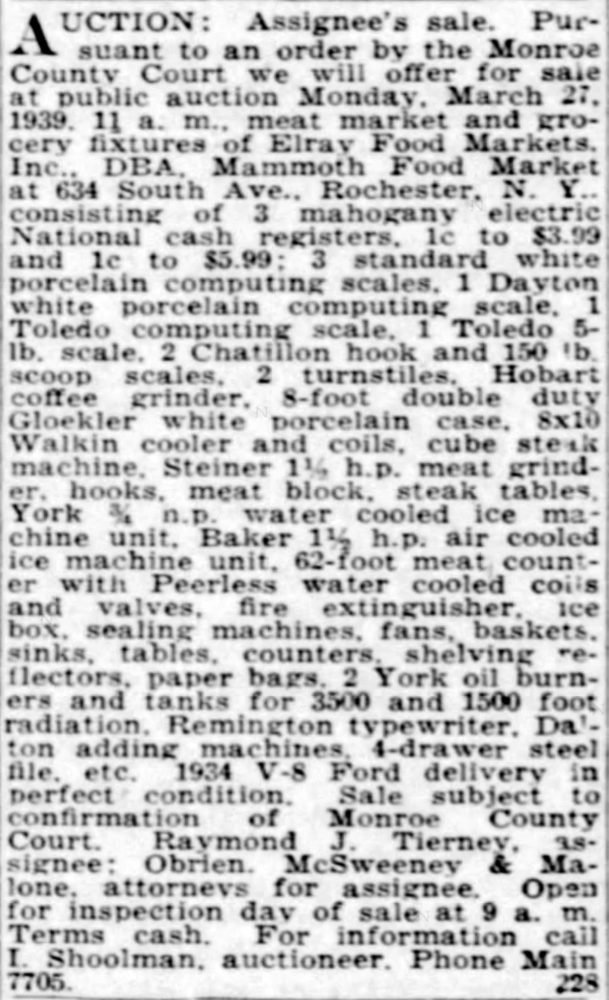
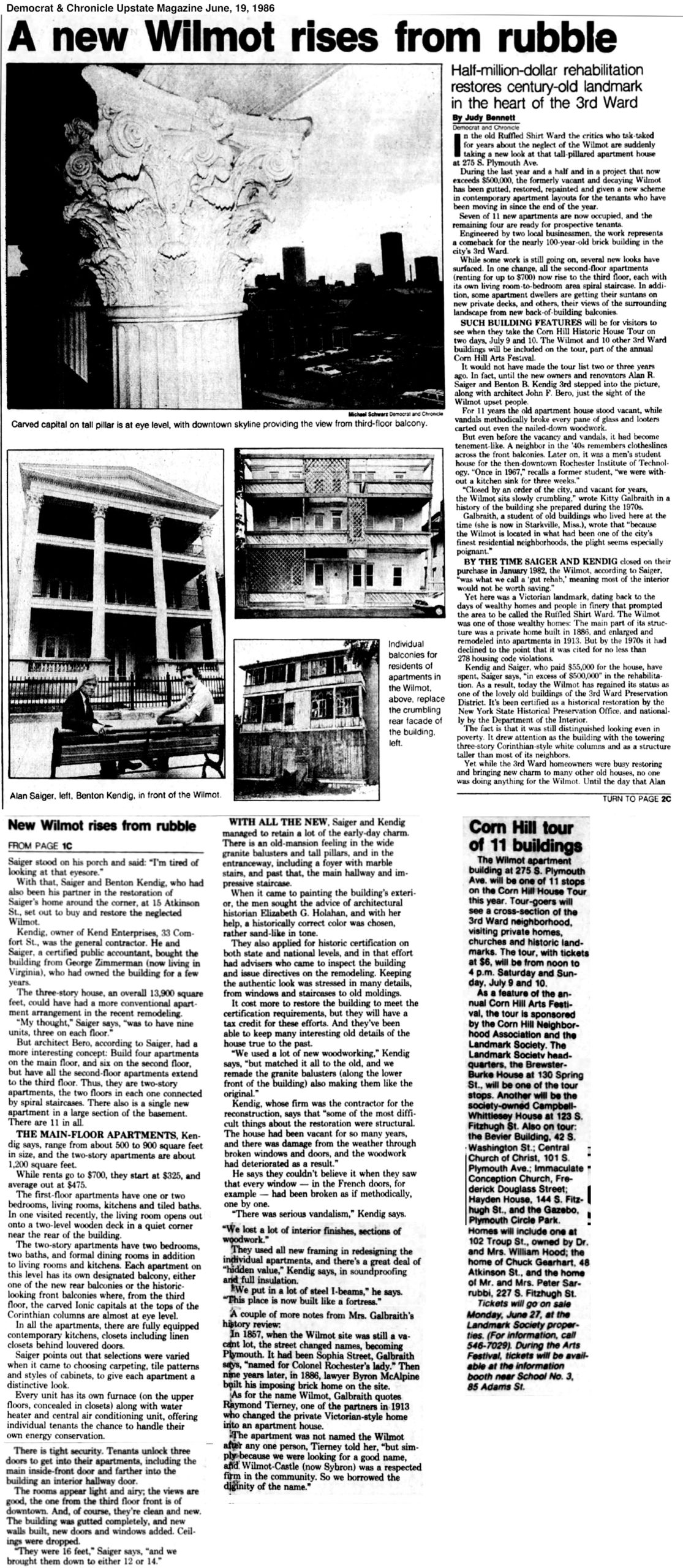
Paul..,,,this is AMAZING THank you so much for compiling and sharing
Paul and Peggi
Thanks so much for putting this all together!!
I’m only part way through it but it is incredible.
So much information!!
Your father was so special to put all this together for all of us.
I truly wish I had paid more attention to all Grandpa’s stories when I could have.
Pictures are phenomenal!!
Thanks again!!
Love to both of you.
Ann and family
Paul and Peggi, Thank you for all the love and effort that went into this, both yours, and Uncle Leo’s. We have such a legacy! To be able to read about our Grandfather’s (and Grandmother’s) lives, their trials and accomplishments, and his words, is so special. I’m inspired and profoundly grateful for the family that I was fortunate to be born into and raised by.
Paul and Peggi,
It took me until today to read this wonderful history of our family. Thank you for all you did putting this together. Thank you for your dear father and his research. How very blessed we are. We have been given a rich inheritance started long ago and continues in each of us to share with everyone we encounter today.
Much gratitude to God and you, Kathleen
Thank you so much Paul and Peggi for creating this! Wow, so fascinating and I love looking at the old pictures of the store and easily identifying my dad in many of these pictures as he looks just like my son Jack. Thank you for preserving this history for the generations to come. xx Allison Tierney
This is so cool! I really enjoyed reading through this and getting to see all the photos. The big family photo with Grandpa (Leo) holding my dad is so precious!
I love this! I didn’t know it existed until just recently. Being able to read the history of our family is really cool.
I’ve been told that I and my 2 brothers are the last boys of the Tierney name. I do not know how true that is though since I haven’t really looked into it. My brother’s and I would like to join the family gathering we’ve heard about sometime.
This is a great way to save our history, thank you so much to Paul Dodd for putting this together!